

Creative Nonfiction: What It Is and How to Write It
Sean Glatch | March 31, 2024 | 7 Comments
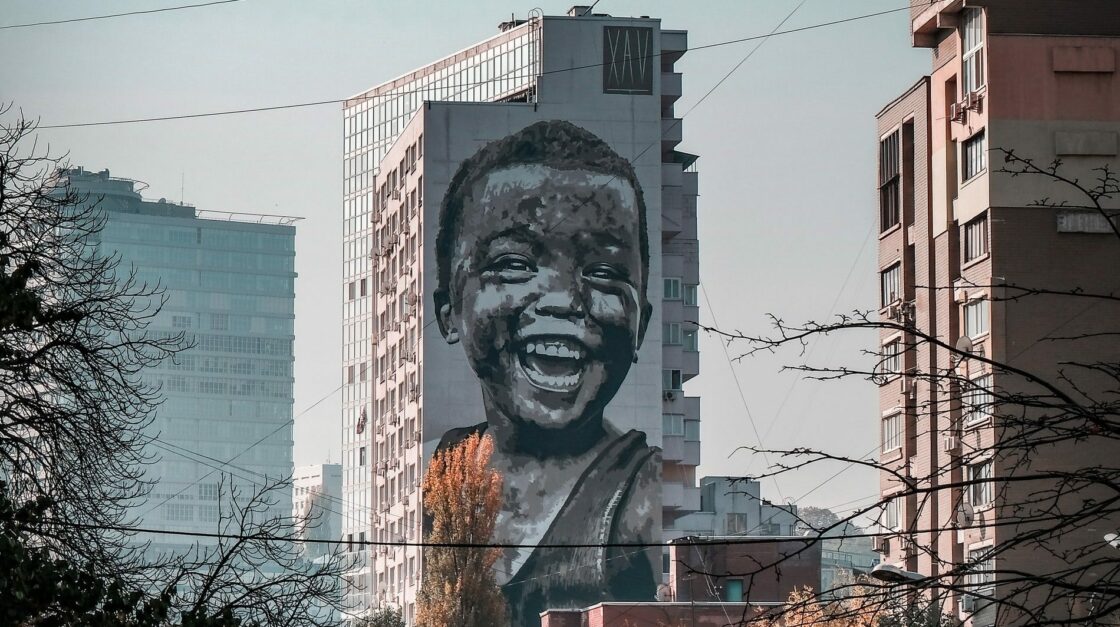
What is creative nonfiction? Despite its slightly enigmatic name, no literary genre has grown quite as quickly as creative nonfiction in recent decades. Literary nonfiction is now well-established as a powerful means of storytelling, and bookstores now reserve large amounts of space for nonfiction, when it often used to occupy a single bookshelf.
Like any literary genre, creative nonfiction has a long history; also like other genres, defining contemporary CNF for the modern writer can be nuanced. If you’re interested in writing true-to-life stories but you’re not sure where to begin, let’s start by dissecting the creative nonfiction genre and what it means to write a modern literary essay.
What Creative Nonfiction Is
Creative nonfiction employs the creative writing techniques of literature, such as poetry and fiction, to retell a true story.
How do we define creative nonfiction? What makes it “creative,” as opposed to just “factual writing”? These are great questions to ask when entering the genre, and they require answers which could become literary essays themselves.
In short, creative nonfiction (CNF) is a form of storytelling that employs the creative writing techniques of literature, such as poetry and fiction, to retell a true story. Creative nonfiction writers don’t just share pithy anecdotes, they use craft and technique to situate the reader into their own personal lives. Fictional elements, such as character development and narrative arcs, are employed to create a cohesive story, but so are poetic elements like conceit and juxtaposition.
The CNF genre is wildly experimental, and contemporary nonfiction writers are pushing the bounds of literature by finding new ways to tell their stories. While a CNF writer might retell a personal narrative, they might also focus their gaze on history, politics, or they might use creative writing elements to write an expository essay. There are very few limits to what creative nonfiction can be, which is what makes defining the genre so difficult—but writing it so exciting.
Different Forms of Creative Nonfiction
From the autobiographies of Mark Twain and Benvenuto Cellini, to the more experimental styles of modern writers like Karl Ove Knausgård, creative nonfiction has a long history and takes a wide variety of forms. Common iterations of the creative nonfiction genre include the following:
Also known as biography or autobiography, the memoir form is probably the most recognizable form of creative nonfiction. Memoirs are collections of memories, either surrounding a single narrative thread or multiple interrelated ideas. The memoir is usually published as a book or extended piece of fiction, and many memoirs take years to write and perfect. Memoirs often take on a similar writing style as the personal essay does, though it must be personable and interesting enough to encourage the reader through the entire book.
Personal Essay
Personal essays are stories about personal experiences told using literary techniques.
When someone hears the word “essay,” they instinctively think about those five paragraph book essays everyone wrote in high school. In creative nonfiction, the personal essay is much more vibrant and dynamic. Personal essays are stories about personal experiences, and while some personal essays can be standalone stories about a single event, many essays braid true stories with extended metaphors and other narratives.
Personal essays are often intimate, emotionally charged spaces. Consider the opening two paragraphs from Beth Ann Fennelly’s personal essay “ I Survived the Blizzard of ’79. ”
We didn’t question. Or complain. It wouldn’t have occurred to us, and it wouldn’t have helped. I was eight. Julie was ten.
We didn’t know yet that this blizzard would earn itself a moniker that would be silk-screened on T-shirts. We would own such a shirt, which extended its tenure in our house as a rag for polishing silver.
The word “essay” comes from the French “essayer,” which means “to try” or “attempt.” The personal essay is more than just an autobiographical narrative—it’s an attempt to tell your own history with literary techniques.
Lyric Essay
The lyric essay contains similar subject matter as the personal essay, but is much more experimental in form.
The lyric essay contains similar subject matter as the personal essay, with one key distinction: lyric essays are much more experimental in form. Poetry and creative nonfiction merge in the lyric essay, challenging the conventional prose format of paragraphs and linear sentences.
The lyric essay stands out for its unique writing style and sentence structure. Consider these lines from “ Life Code ” by J. A. Knight:
The dream goes like this: blue room of water. God light from above. Child’s fist, foot, curve, face, the arc of an eye, the symmetry of circles… and then an opening of this body—which surprised her—a movement so clean and assured and then the push towards the light like a frog or a fish.
What we get is language driven by emotion, choosing an internal logic rather than a universally accepted one.
Lyric essays are amazing spaces to break barriers in language. For example, the lyricist might write a few paragraphs about their story, then examine a key emotion in the form of a villanelle or a ghazal . They might decide to write their entire essay in a string of couplets or a series of sonnets, then interrupt those stanzas with moments of insight or analysis. In the lyric essay, language dictates form. The successful lyricist lets the words arrange themselves in whatever format best tells the story, allowing for experimental new forms of storytelling.
Literary Journalism
Much more ambiguously defined is the idea of literary journalism. The idea is simple: report on real life events using literary conventions and styles. But how do you do this effectively, in a way that the audience pays attention and takes the story seriously?
You can best find examples of literary journalism in more “prestigious” news journals, such as The New Yorker , The Atlantic , Salon , and occasionally The New York Times . Think pieces about real world events, as well as expository journalism, might use braiding and extended metaphors to make readers feel more connected to the story. Other forms of nonfiction, such as the academic essay or more technical writing, might also fall under literary journalism, provided those pieces still use the elements of creative nonfiction.
Consider this recently published article from The Atlantic : The Uncanny Tale of Shimmel Zohar by Lawrence Weschler. It employs a style that’s breezy yet personable—including its opening line.
So I first heard about Shimmel Zohar from Gravity Goldberg—yeah, I know, but she insists it’s her real name (explaining that her father was a physicist)—who is the director of public programs and visitor experience at the Contemporary Jewish Museum, in San Francisco.
How to Write Creative Nonfiction: Common Elements and Techniques
What separates a general news update from a well-written piece of literary journalism? What’s the difference between essay writing in high school and the personal essay? When nonfiction writers put out creative work, they are most successful when they utilize the following elements.
Just like fiction, nonfiction relies on effective narration. Telling the story with an effective plot, writing from a certain point of view, and using the narrative to flesh out the story’s big idea are all key craft elements. How you structure your story can have a huge impact on how the reader perceives the work, as well as the insights you draw from the story itself.
Consider the first lines of the story “ To the Miami University Payroll Lady ” by Frenci Nguyen:
You might not remember me, but I’m the dark-haired, Texas-born, Asian-American graduate student who visited the Payroll Office the other day to complete direct deposit and tax forms.
Because the story is written in second person, with the reader experiencing the story as the payroll lady, the story’s narration feels much more personal and important, forcing the reader to evaluate their own personal biases and beliefs.
Observation
Telling the story involves more than just simple plot elements, it also involves situating the reader in the key details. Setting the scene requires attention to all five senses, and interpersonal dialogue is much more effective when the narrator observes changes in vocal pitch, certain facial expressions, and movements in body language. Essentially, let the reader experience the tiny details – we access each other best through minutiae.
The story “ In Transit ” by Erica Plouffe Lazure is a perfect example of storytelling through observation. Every detail of this flash piece is carefully noted to tell a story without direct action, using observations about group behavior to find hope in a crisis. We get observation when the narrator notes the following:
Here at the St. Thomas airport in mid-March, we feel the urgency of the transition, the awareness of how we position our bodies, where we place our luggage, how we consider for the first time the numbers of people whose belongings are placed on the same steel table, the same conveyor belt, the same glowing radioactive scan, whose IDs are touched by the same gloved hand[.]
What’s especially powerful about this story is that it is written in a single sentence, allowing the reader to be just as overwhelmed by observation and context as the narrator is.
We’ve used this word a lot, but what is braiding? Braiding is a technique most often used in creative nonfiction where the writer intertwines multiple narratives, or “threads.” Not all essays use braiding, but the longer a story is, the more it benefits the writer to intertwine their story with an extended metaphor or another idea to draw insight from.
“ The Crush ” by Zsofia McMullin demonstrates braiding wonderfully. Some paragraphs are written in first person, while others are written in second person.
The following example from “The Crush” demonstrates braiding:
Your hair is still wet when you slip into the booth across from me and throw your wallet and glasses and phone on the table, and I marvel at how everything about you is streamlined, compact, organized. I am always overflowing — flesh and wants and a purse stuffed with snacks and toy soldiers and tissues.
The author threads these narratives together by having both people interact in a diner, yet the reader still perceives a distance between the two threads because of the separation of “I” and “you” pronouns. When these threads meet, briefly, we know they will never meet again.
Speaking of insight, creative nonfiction writers must draw novel conclusions from the stories they write. When the narrator pauses in the story to delve into their emotions, explain complex ideas, or draw strength and meaning from tough situations, they’re finding insight in the essay.
Often, creative writers experience insight as they write it, drawing conclusions they hadn’t yet considered as they tell their story, which makes creative nonfiction much more genuine and raw.
The story “ Me Llamo Theresa ” by Theresa Okokun does a fantastic job of finding insight. The story is about the history of our own names and the generations that stand before them, and as the writer explores her disconnect with her own name, she recognizes a similar disconnect in her mother, as well as the need to connect with her name because of her father.
The narrator offers insight when she remarks:
I began to experience a particular type of identity crisis that so many immigrants and children of immigrants go through — where we are called one name at school or at work, but another name at home, and in our hearts.
How to Write Creative Nonfiction: the 5 R’s
CNF pioneer Lee Gutkind developed a very system called the “5 R’s” of creative nonfiction writing. Together, the 5 R’s form a general framework for any creative writing project. They are:
- Write about r eal life: Creative nonfiction tackles real people, events, and places—things that actually happened or are happening.
- Conduct extensive r esearch: Learn as much as you can about your subject matter, to deepen and enrich your ability to relay the subject matter. (Are you writing about your tenth birthday? What were the newspaper headlines that day?)
- (W) r ite a narrative: Use storytelling elements originally from fiction, such as Freytag’s Pyramid , to structure your CNF piece’s narrative as a story with literary impact rather than just a recounting.
- Include personal r eflection: Share your unique voice and perspective on the narrative you are retelling.
- Learn by r eading: The best way to learn to write creative nonfiction well is to read it being written well. Read as much CNF as you can, and observe closely how the author’s choices impact you as a reader.
You can read more about the 5 R’s in this helpful summary article .
How to Write Creative Nonfiction: Give it a Try!
Whatever form you choose, whatever story you tell, and whatever techniques you write with, the more important aspect of creative nonfiction is this: be honest. That may seem redundant, but often, writers mistakenly create narratives that aren’t true, or they use details and symbols that didn’t exist in the story. Trust us – real life is best read when it’s honest, and readers can tell when details in the story feel fabricated or inflated. Write with honesty, and the right words will follow!
Ready to start writing your creative nonfiction piece? If you need extra guidance or want to write alongside our community, take a look at the upcoming nonfiction classes at Writers.com. Now, go and write the next bestselling memoir!
Sean Glatch
Thank you so much for including these samples from Hippocampus Magazine essays/contributors; it was so wonderful to see these pieces reflected on from the craft perspective! – Donna from Hippocampus
Absolutely, Donna! I’m a longtime fan of Hippocampus and am always astounded by the writing you publish. We’re always happy to showcase stunning work 🙂
I like how it is written about him”…When he’s not writing, which is often, he thinks he should be writing.”
[…] Source: https://www.masterclass.com/articles/a-complete-guide-to-writing-creative-nonfiction#5-creative-nonfiction-writing-promptshttps://writers.com/what-is-creative-nonfiction […]
So impressive
Thank you. I’ve been researching a number of figures from the 1800’s and have come across a large number of ‘biographies’ of figures. These include quoted conversations which I knew to be figments of the author and yet some works are lauded as ‘histories’.
excellent guidelines inspiring me to write CNF thank you
Leave a Comment Cancel Reply
Save my name, email, and website in this browser for the next time I comment.

A Guide to Writing Creative Nonfiction
by Melissa Donovan | Mar 4, 2021 | Creative Writing | 12 comments
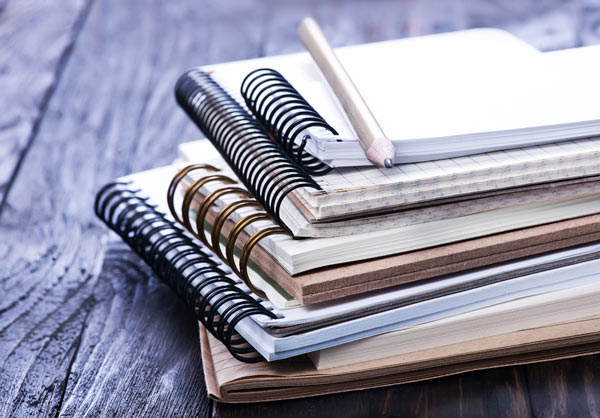
Try your hand at writing creative nonfiction.
Here at Writing Forward, we’re primarily interested in three types of creative writing: poetry, fiction, and creative nonfiction.
With poetry and fiction, there are techniques and best practices that we can use to inform and shape our writing, but there aren’t many rules beyond the standards of style, grammar, and good writing . We can let our imaginations run wild; everything from nonsense to outrageous fantasy is fair game for bringing our ideas to life when we’re writing fiction and poetry.
However, when writing creative nonfiction, there are some guidelines that we need to follow. These guidelines aren’t set in stone; however, if you violate them, you might find yourself in trouble with your readers as well as the critics.
What is Creative Nonfiction?
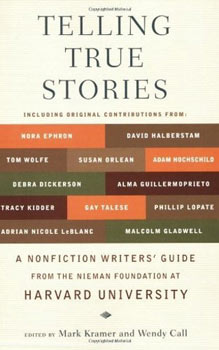
Telling True Stories (aff link).
What sets creative nonfiction apart from fiction or poetry?
For starters, creative nonfiction is factual. A memoir is not just any story; it’s a true story. A biography is the real account of someone’s life. There is no room in creative nonfiction for fabrication or manipulation of the facts.
So what makes creative nonfiction writing different from something like textbook writing or technical writing? What makes it creative?
Nonfiction writing that isn’t considered creative usually has business or academic applications. Such writing isn’t designed for entertainment or enjoyment. Its sole purpose is to convey information, usually in a dry, straightforward manner.
Creative nonfiction, on the other hand, pays credence to the craft of writing, often through literary devices and storytelling techniques, which make the prose aesthetically pleasing and bring layers of meaning to the context. It’s pleasurable to read.
According to Wikipedia:
Creative nonfiction (also known as literary or narrative nonfiction) is a genre of writing truth which uses literary styles and techniques to create factually accurate narratives. Creative nonfiction contrasts with other nonfiction, such as technical writing or journalism, which is also rooted in accurate fact, but is not primarily written in service to its craft.
Like other forms of nonfiction, creative nonfiction relies on research, facts, and credibility. While opinions may be interjected, and often the work depends on the author’s own memories (as is the case with memoirs and autobiographies), the material must be verifiable and accurately reported.
Creative Nonfiction Genres and Forms
There are many forms and genres within creative nonfiction:
- Autobiography and biography
- Personal essays
- Literary journalism
- Any topical material, such as food or travel writing, self-development, art, or history, can be creatively written with a literary angle
Let’s look more closely at a few of these nonfiction forms and genres:
Memoirs: A memoir is a long-form (book-length) written work. It is a firsthand, personal account that focuses on a specific experience or situation. One might write a memoir about serving in the military or struggling with loss. Memoirs are not life stories, but they do examine life through a particular lens. For example, a memoir about being a writer might begin in childhood, when the author first learned to write. However, the focus of the book would be on writing, so other aspects of the author’s life would be left out, for the most part.
Biographies and autobiographies: A biography is the true story of someone’s life. If an author composes their own biography, then it’s called an autobiography. These works tend to cover the entirety of a person’s life, albeit selectively.
Literary journalism: Journalism sticks with the facts while exploring the who, what, where, when, why, and how of a particular person, topic, or event. Biographies, for example, are a genre of literary journalism, which is a form of nonfiction writing. Traditional journalism is a method of information collection and organization. Literary journalism also conveys facts and information, but it honors the craft of writing by incorporating storytelling techniques and literary devices. Opinions are supposed to be absent in traditional journalism, but they are often found in literary journalism, which can be written in long or short formats.
Personal essays are a short form of creative nonfiction that can cover a wide range of styles, from writing about one’s experiences to expressing one’s personal opinions. They can address any topic imaginable. Personal essays can be found in many places, from magazines and literary journals to blogs and newspapers. They are often a short form of memoir writing.
Speeches can cover a range of genres, from political to motivational to educational. A tributary speech honors someone whereas a roast ridicules them (in good humor). Unlike most other forms of writing, speeches are written to be performed rather than read.
Journaling: A common, accessible, and often personal form of creative nonfiction writing is journaling. A journal can also contain fiction and poetry, but most journals would be considered nonfiction. Some common types of written journals are diaries, gratitude journals, and career journals (or logs), but this is just a small sampling of journaling options.
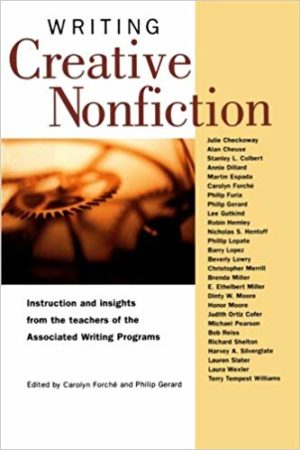
Writing Creative Nonfiction (aff link).
Any topic or subject matter is fair game in the realm of creative nonfiction. Some nonfiction genres and topics that offer opportunities for creative nonfiction writing include food and travel writing, self-development, art and history, and health and fitness. It’s not so much the topic or subject matter that renders a written work as creative; it’s how it’s written — with due diligence to the craft of writing through application of language and literary devices.
Guidelines for Writing Creative Nonfiction
Here are six simple guidelines to follow when writing creative nonfiction:
- Get your facts straight. It doesn’t matter if you’re writing your own story or someone else’s. If readers, publishers, and the media find out you’ve taken liberties with the truth of what happened, you and your work will be scrutinized. Negative publicity might boost sales, but it will tarnish your reputation; you’ll lose credibility. If you can’t refrain from fabrication, then think about writing fiction instead of creative nonfiction.
- Issue a disclaimer. A lot of nonfiction is written from memory, and we all know that human memory is deeply flawed. It’s almost impossible to recall a conversation word for word. You might forget minor details, like the color of a dress or the make and model of a car. If you aren’t sure about the details but are determined to include them, be upfront and include a disclaimer that clarifies the creative liberties you’ve taken.
- Consider the repercussions. If you’re writing about other people (even if they are secondary figures), you might want to check with them before you publish your nonfiction. Some people are extremely private and don’t want any details of their lives published. Others might request that you leave certain things out, which they want to keep private. Otherwise, make sure you’ve weighed the repercussions of revealing other people’s lives to the world. Relationships have been both strengthened and destroyed as a result of authors publishing the details of other people’s lives.
- Be objective. You don’t need to be overly objective if you’re telling your own, personal story. However, nobody wants to read a highly biased biography. Book reviews for biographies are packed with harsh criticism for authors who didn’t fact-check or provide references and for those who leave out important information or pick and choose which details to include to make the subject look good or bad.
- Pay attention to language. You’re not writing a textbook, so make full use of language, literary devices, and storytelling techniques.
- Know your audience. Creative nonfiction sells, but you must have an interested audience. A memoir about an ordinary person’s first year of college isn’t especially interesting. Who’s going to read it? However, a memoir about someone with a learning disability navigating the first year of college is quite compelling, and there’s an identifiable audience for it. When writing creative nonfiction, a clearly defined audience is essential.
Are you looking for inspiration? Check out these creative nonfiction writing ideas.
Ten creative nonfiction writing prompts and projects.
The prompts below are excerpted from my book, 1200 Creative Writing Prompts , which contains fiction, poetry, and creative nonfiction writing prompts. Use these prompts to spark a creative nonfiction writing session.
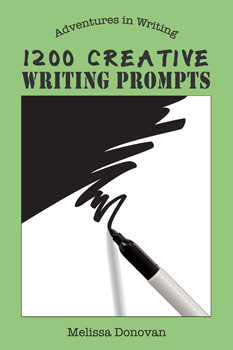
1200 Creative Writing Prompts (aff link).
- What is your favorite season? What do you like about it? Write a descriptive essay about it.
- What do you think the world of technology will look like in ten years? Twenty? What kind of computers, phones, and other devices will we use? Will technology improve travel? Health care? What do you expect will happen and what would you like to happen?
- Have you ever fixed something that was broken? Ever solved a computer problem on your own? Write an article about how to fix something or solve some problem.
- Have you ever had a run-in with the police? What happened?
- Have you ever traveled alone? Tell your story. Where did you go? Why? What happened?
- Let’s say you write a weekly advice column. Choose the topic you’d offer advice on, and then write one week’s column.
- Think of a major worldwide problem: for example, hunger, climate change, or political corruption. Write an article outlining a solution (or steps toward a solution).
- Choose a cause that you feel is worthy and write an article persuading others to join that cause.
- Someone you barely know asks you to recommend a book. What do you recommend and why?
- Hard skills are abilities you have acquired, such as using software, analyzing numbers, and cooking. Choose a hard skill you’ve mastered and write an article about how this skill is beneficial using your own life experiences as examples.
Do You Write Creative Nonfiction?
Have you ever written creative nonfiction? How often do you read it? Can you think of any nonfiction forms and genres that aren’t included here? Do you have any guidelines to add to this list? Are there any situations in which it would be acceptable to ignore these guidelines? Got any tips to add? Do you feel that nonfiction should focus on content and not on craft? Leave a comment to share your thoughts, and keep writing.

12 Comments
Shouldn’t ALL non-fiction be creative to some extent? I am a former business journalist, and won awards for the imaginative approach I took to writing about even the driest of business topics: pensions, venture capital, tax, employment law and other potentially dusty subjects. The drier and more complicated the topic, the more creative the approach must be, otherwise no-one with anything else to do will bother to wade through it. [to be honest, taking the fictional approach to these ghastly tortuous topics was the only way I could face writing about them.] I used all the techniques that fiction writers have to play with, and used some poetic techniques, too, to make the prose more readable. What won the first award was a little serial about two businesses run and owned by a large family at war with itself. Every episode centred on one or two common and crucial business issues, wrapped up in a comedy-drama, and it won a lot of fans (happily for me) because it was so much easier to read and understand than the dry technical writing they were used to. Life’s too short for dusty writing!
I believe most journalism is creative and would therefore fall under creative nonfiction. However, there is a lot of legal, technical, medical, science, and textbook writing in which there is no room for creativity (or creativity has not made its way into these genres yet). With some forms, it makes sense. I don’t think it would be appropriate for legal briefings to use story or literary devices just to add a little flair. On the other hand, it would be a good thing if textbooks were a little more readable.
I think Abbs is right – even in academic papers, an example or story helps the reader visualize the problem or explanation more easily. I scan business books to see if there are stories or examples, if not, then I don’t pick up the book. That’s where the creativity comes in – how to create examples, what to conflate, what to emphasis as we create our fictional people to illustrate important, real points.
Thanks for the post. Very helpful. I’d never thought about writing creative nonfiction before.
You’re welcome 🙂
Hi Melissa!
Love your website. You always give a fun and frank assessment of all things pertaining to writing. It is a pleasure to read. I have even bought several of the reference and writing books you recommended. Keep up the great work.
Top 10 Reasons Why Creative Nonfiction Is A Questionable Category
10. When you look up “Creative Nonfiction” in the dictionary it reads: See Fiction
9. The first creative nonfiction example was a Schwinn Bicycle Assembly Guide that had printed in its instructions: Can easily be assembled by one person with a Phillips head screw driver, Allen keys, adjustable wrench and cable cutters in less than an hour.
8. Creative Nonfiction; Based on actual events; Suggested by a true event; Based on a true story. It’s a slippery slope.
7. The Creative Nonfiction Quarterly is only read by eleven people. Five have the same last name.
6. Creative Nonfiction settings may only include: hospitals, concentration camps, prisons and cemeteries. Exceptions may be made for asylums, rehab centers and Capitol Hill.
5. The writers who create Sterile Nonfiction or Unimaginative Nonfiction now want their category recognized.
4. Creative; Poetic License; Embellishment; Puffery. See where this is leading?
3. Creative Nonfiction is to Nonfiction as Reality TV is to Documentaries.
2. My attorney has advised that I exercise my 5th Amendment Rights or that I be allowed to give written testimony in a creative nonfiction way.
1. People believe it is a film with Will Ferrell, Emma Thompson and Queen Latifa.
Hi Steve. I’m not sure if your comment is meant to be taken tongue-in-cheek, but I found it humorous.
My publisher is releasing my Creative Nonfiction book based on my grandmother’s life this May 2019 in Waikiki. I’ll give you an update soon about sales. I was fortunate enough to get some of the original and current Hawaii 5-0 members to show up for the book signing.
Hi, when writing creative nonfiction- is it appropriate to write from someone else’s point of view when you don’t know them? I was thinking of writing about Greta Thungbrurg for creative nonfiction competition – but I can directly ask her questions so I’m unsure as to whether it’s accurate enough to be classified as creative non-fiction. Thank you!
Hi Madeleine. I’m not aware of creative nonfiction being written in first person from someone else’s point of view. The fact of the matter is that it wouldn’t be creative nonfiction because a person cannot truly show events from another person’s perspective. So I wouldn’t consider something like that nonfiction. It would usually be a biography written in third person, and that is common. You can certainly use quotes and other indicators to represent someone else’s views and experiences. I could probably be more specific if I knew what kind of work it is (memoir, biography, self-development, etc.).
Dear Melissa: I am trying to market a book in the metaphysical genre about an experience I had, receiving the voice of a Civil War spirit who tells his story (not channeling). Part is my reaction and discussion with a close friend so it is not just memoir. I referred to it as ‘literary non-fiction’ but an agent put this down by saying it is NOT literary non-fiction. Looking at your post, could I say that my book is ‘creative non-fiction’? (agents can sometimes be so nit-picky)
Hi Liz. You opened your comment by classifying the book as metaphysical but later referred to it as literary nonfiction. The premise definitely sounds like a better fit in the metaphysical category. Creative nonfiction is not a genre; it’s a broader category or description. Basically, all literature is either fiction or nonfiction (poetry would be separate from these). Describing nonfiction as creative only indicates that it’s not something like a user guide. I think you were heading in the right direction with the metaphysical classification.
The goal of marketing and labeling books with genres is to find a readership that will be interested in the work. This is an agent’s area of expertise, so assuming you’re speaking with a competent agent, I’d suggest taking their advice in this matter. It indicates that the audience perusing the literary nonfiction aisles is simply not a match for this book.
Trackbacks/Pingbacks
- Top Picks Thursday! For Writers & Readers 03-11-2021 | The Author Chronicles - […] If your interests leans toward nonfiction, Melissa Donovan presents a guide to writing creative nonfiction. […]
Submit a Comment Cancel reply
Your email address will not be published. Required fields are marked *
This site uses Akismet to reduce spam. Learn how your comment data is processed .

Subscribe and get The Writer’s Creed graphic e-booklet, plus a weekly digest with the latest articles on writing, as well as special offers and exclusive content.

Recent Posts
- Homophones for Music Lovers: Turn up the Bass and Play a Chord
- Are You Concerned About Originality in Your Writing?
- Should You Write Fast or Write Well?
- Writing Tips: Kill Your Darlings
- Writing Resources: A Poetry Handbook
Write on, shine on!
Pin It on Pinterest
TRY OUR FREE APP
Write your book in Reedsy Studio. Try the beloved writing app for free today.
Craft your masterpiece in Reedsy Studio
Plan, write, edit, and format your book in our free app made for authors.

Guides • Perfecting your Craft
Last updated on Feb 20, 2023
Creative Nonfiction: How to Spin Facts into Narrative Gold
Creative nonfiction is a genre of creative writing that approaches factual information in a literary way. This type of writing applies techniques drawn from literary fiction and poetry to material that might be at home in a magazine or textbook, combining the craftsmanship of a novel with the rigor of journalism.
Here are some popular examples of creative nonfiction:
- The Collected Schizophrenias by Esmé Weijun Wang
- Intimations by Zadie Smith
- Me Talk Pretty One Day by David Sedaris
- The Immortal Life of Henrietta Lacks by Rebecca Skloot
- Translating Myself and Others by Jhumpa Lahiri
- The Madwoman in the Attic by Sandra M. Gilbert and Susan Gubar
- I Know Why The Caged Bird Sings by Maya Angelou
- Trick Mirror by Jia Tolentino
Creative nonfiction is not limited to novel-length writing, of course. Popular radio shows and podcasts like WBEZ’s This American Life or Sarah Koenig’s Serial also explore audio essays and documentary with a narrative approach, while personal essays like Nora Ephron’s A Few Words About Breasts and Mariama Lockington’s What A Black Woman Wishes Her Adoptive White Parents Knew also present fact with fiction-esque flair.
Writing short personal essays can be a great entry point to writing creative nonfiction. Think about a topic you would like to explore, perhaps borrowing from your own life, or a universal experience. Journal freely for five to ten minutes about the subject, and see what direction your creativity takes you in. These kinds of exercises will help you begin to approach reality in a more free flowing, literary way — a muscle you can use to build up to longer pieces of creative nonfiction.
If you think you’d like to bring your writerly prowess to nonfiction, here are our top tips for creating compelling creative nonfiction that’s as readable as a novel, but as illuminating as a scholarly article.

Write a memoir focused on a singular experience
Humans love reading about other people’s lives — like first-person memoirs, which allow you to get inside another person’s mind and learn from their wisdom. Unlike autobiographies, memoirs can focus on a single experience or theme instead of chronicling the writers’ life from birth onward.
For that reason, memoirs tend to focus on one core theme and—at least the best ones—present a clear narrative arc, like you would expect from a novel. This can be achieved by selecting a singular story from your life; a formative experience, or period of time, which is self-contained and can be marked by a beginning, a middle, and an end.
When writing a memoir, you may also choose to share your experience in parallel with further research on this theme. By performing secondary research, you’re able to bring added weight to your anecdotal evidence, and demonstrate the ways your own experience is reflective (or perhaps unique from) the wider whole.
Example: The Year of Magical Thinking by Joan Didion
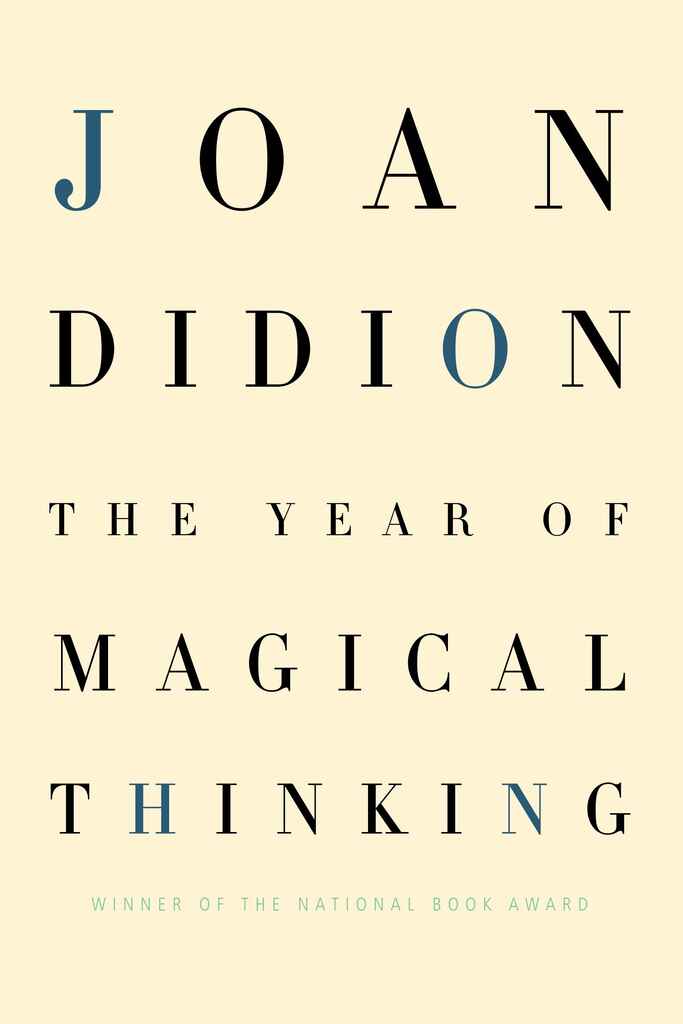
Joan Didion’s The Year of Magical Thinking , for example, interweaves the author’s experience of widowhood with sociological research on grief. Chronicling the year after her husband’s unexpected death, and the simultaneous health struggles of their daughter, The Year of Magical Thinking is a poignant personal story, layered with universal insight into what it means to lose someone you love. The result is the definitive exploration of bereavement — and a stellar example of creative nonfiction done well.
📚 Looking for more reading recommendations? Check out our list of the best memoirs of the last century .
Tip: What you cut out is just as important as what you keep
When writing a memoir that is focused around a singular theme, it’s important to be selective in what to include, and what to leave out. While broader details of your life may be helpful to provide context, remember to resist the impulse to include too much non-pertinent backstory. By only including what is most relevant, you are able to provide a more focused reader experience, and won’t leave readers guessing what the significance of certain non-essential anecdotes will be.
💡 For more memoir-planning tips, head over to our post on outlining memoirs .
Of course, writing a memoir isn’t the only form of creative nonfiction that lets you tap into your personal life — especially if there’s something more explicit you want to say about the world at large… which brings us onto our next section.
Pen a personal essay that has something bigger to say
Personal essays condense the first-person focus and intimacy of a memoir into a tighter package — tunneling down into a specific aspect of a theme or narrative strand within the author’s personal experience.
Often involving some element of journalistic research, personal essays can provide examples or relevant information that comes from outside the writer’s own experience. This can take the form of other people’s voices quoted in the essay, or facts and stats. By combining lived experiences with external material, personal essay writers can reach toward a bigger message, telling readers something about human behavior or society instead of just letting them know the writer better.
Example: The Empathy Exams by Leslie Jamison
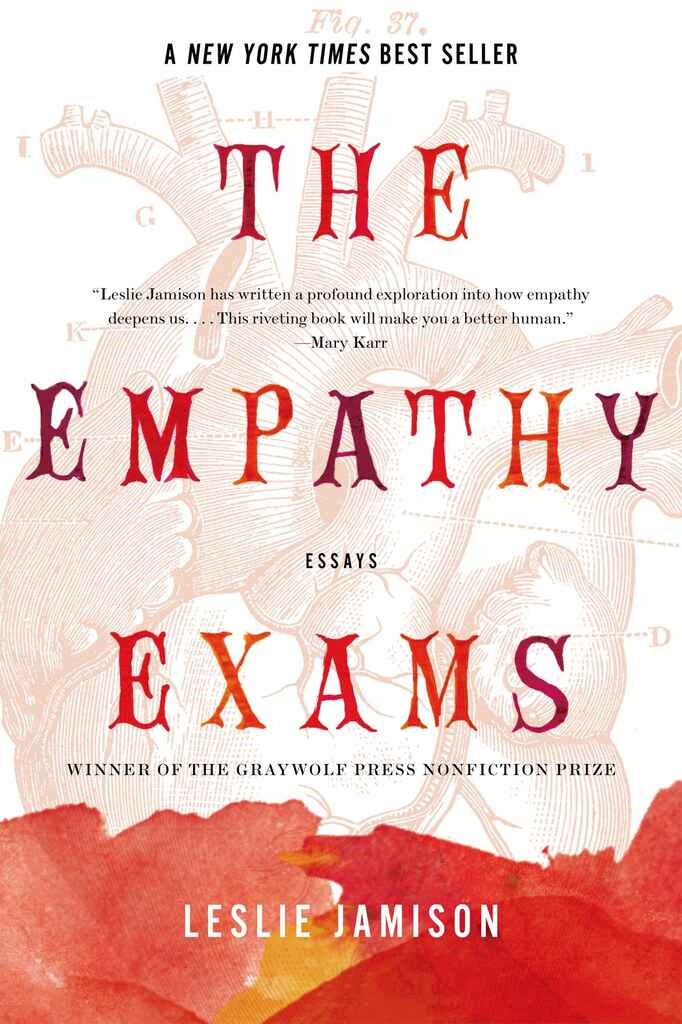
Leslie Jamison's widely acclaimed collection The Empathy Exams tackles big questions (Why is pain so often performed? Can empathy be “bad”?) by grounding them in the personal. While Jamison draws from her own experiences, both as a medical actor who was paid to imitate pain, and as a sufferer of her own ailments, she also reaches broader points about the world we live in within each of her essays.
Whether she’s talking about the justice system or reality TV, Jamison writes with both vulnerability and poise, using her lived experience as a jumping-off point for exploring the nature of empathy itself.
Tip: Try to show change in how you feel about something
Including external perspectives, as we’ve just discussed above, will help shape your essay, making it meaningful to other people and giving your narrative an arc.
Ultimately, you may be writing about yourself, but readers can read what they want into it. In a personal narrative, they’re looking for interesting insights or realizations they can apply to their own understanding of their lives or the world — so don’t lose sight of that. As the subject of the essay, you are not so much the topic as the vehicle for furthering a conversation.
Often, there are three clear stages in an essay:
- Initial state
- Encounter with something external
- New, changed state, and conclusions
By bringing readers through this journey with you, you can guide them to new outlooks and demonstrate how your story is still relevant to them.
Had enough of writing about your own life? Let’s look at a form of creative nonfiction that allows you to get outside of yourself.
Tell a factual story as though it were a novel
The form of creative nonfiction that is perhaps closest to conventional nonfiction is literary journalism. Here, the stories are all fact, but they are presented with a creative flourish. While the stories being told might comfortably inhabit a newspaper or history book, they are presented with a sense of literary significance, and writers can make use of literary techniques and character-driven storytelling.
Unlike news reporters, literary journalists can make room for their own perspectives: immersing themselves in the very action they recount. Think of them as both characters and narrators — but every word they write is true.
If you think literary journalism is up your street, think about the kinds of stories that capture your imagination the most, and what those stories have in common. Are they, at their core, character studies? Parables? An invitation to a new subculture you have never before experienced? Whatever piques your interest, immerse yourself.
Example: The Botany of Desire by Michael Pollan
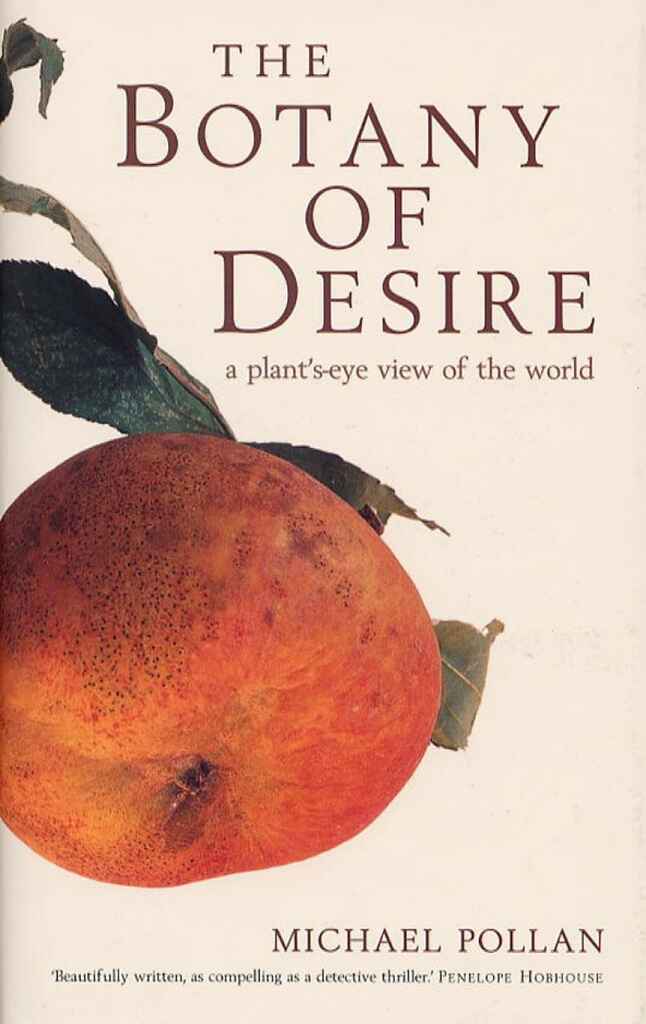
If you’re looking for an example of literary journalism that tells a great story, look no further than Michael Pollan’s The Botany of Desire: A Plant’s-Eye View of the World , which sits at the intersection of food writing and popular science. Though it purports to offer a “plant’s-eye view of the world,” it’s as much about human desires as it is about the natural world.
Through the history of four different plants and human’s efforts to cultivate them, Pollan uses first-hand research as well as archival facts to explore how we attempt to domesticate nature for our own pleasure, and how these efforts can even have devastating consequences. Pollan is himself a character in the story, and makes what could be a remarkably dry topic accessible and engaging in the process.
Tip: Don’t pretend that you’re perfectly objective
You may have more room for your own perspective within literary journalism, but with this power comes great responsibility. Your responsibilities toward the reader remain the same as that of a journalist: you must, whenever possible, acknowledge your own biases or conflicts of interest, as well as any limitations on your research.
Thankfully, the fact that literary journalism often involves a certain amount of immersion in the narrative — that is, the writer acknowledges their involvement in the process — you can touch on any potential biases explicitly, and make it clear that the story you’re telling, while true to what you experienced, is grounded in your own personal perspective.
Approach a famous name with a unique approach
Biographies are the chronicle of a human life, from birth to the present or, sometimes, their demise. Often, fact is stranger than fiction, and there is no shortage of fascinating figures from history to discover. As such, a biographical approach to creative nonfiction will leave you spoilt for choice in terms of subject matter.
Because they’re not written by the subjects themselves (as memoirs are), biographical nonfiction requires careful research. If you plan to write one, do everything in your power to verify historical facts, and interview the subject’s family, friends, and acquaintances when possible. Despite the necessity for candor, you’re still welcome to approach biography in a literary way — a great creative biography is both truthful and beautifully written.
Example: American Prometheus by Kai Bird and Martin J. Sherwin

Alongside the need for you to present the truth is a duty to interpret that evidence with imagination, and present it in the form of a story. Demonstrating a novelist’s skill for plot and characterization, Kai Bird and Martin J. Sherwin’s American Prometheus is a great example of creative nonfiction that develops a character right in front of the readers’ eyes .
American Prometheus follows J. Robert Oppenheimer from his bashful childhood to his role as the father of the atomic bomb, all the way to his later attempts to reckon with his violent legacy.

FREE COURSE
How to Develop Characters
In 10 days, learn to develop complex characters readers will love.
The biography tells a story that would fit comfortably in the pages of a tragic novel, but is grounded in historical research. Clocking in at a hefty 721 pages, American Prometheus distills an enormous volume of archival material, including letters, FBI files, and interviews into a remarkably readable volume.
📚 For more examples of world-widening, eye-opening biographies, check out our list of the 30 best biographies of all time.
Tip: The good stuff lies in the mundane details
Biographers are expected to undertake academic-grade research before they put pen to paper. You will, of course, read any existing biographies on the person you’re writing about, and visit any archives containing relevant material. If you’re lucky, there’ll be people you can interview who knew your subject personally — but even if there aren’t, what’s going to make your biography stand out is paying attention to details, even if they seem mundane at first.
Of course, no one cares which brand of slippers a former US President wore — gossip is not what we’re talking about. But if you discover that they took a long, silent walk every single morning, that’s a granular detail you could include to give your readers a sense of the weight they carried every day. These smaller details add up to a realistic portrait of a living, breathing human being.
But creative nonfiction isn’t just writing about yourself or other people. Writing about art is also an art, as we’ll see below.
Put your favorite writers through the wringer with literary criticism
Literary criticism is often associated with dull, jargon-laden college dissertations — but it can be a wonderfully rewarding form that blurs the lines between academia and literature itself. When tackled by a deft writer, a literary critique can be just as engrossing as the books it analyzes.
Many of the sharpest literary critics are also poets, poetry editors , novelists, or short story writers, with first-hand awareness of literary techniques and the ability to express their insights with elegance and flair. Though literary criticism sounds highly theoretical, it can be profoundly intimate: you’re invited to share in someone’s experience as a reader or writer — just about the most private experience there is.
Example: The Madwoman in the Attic by Sandra M. Gilbert and Susan Gubar
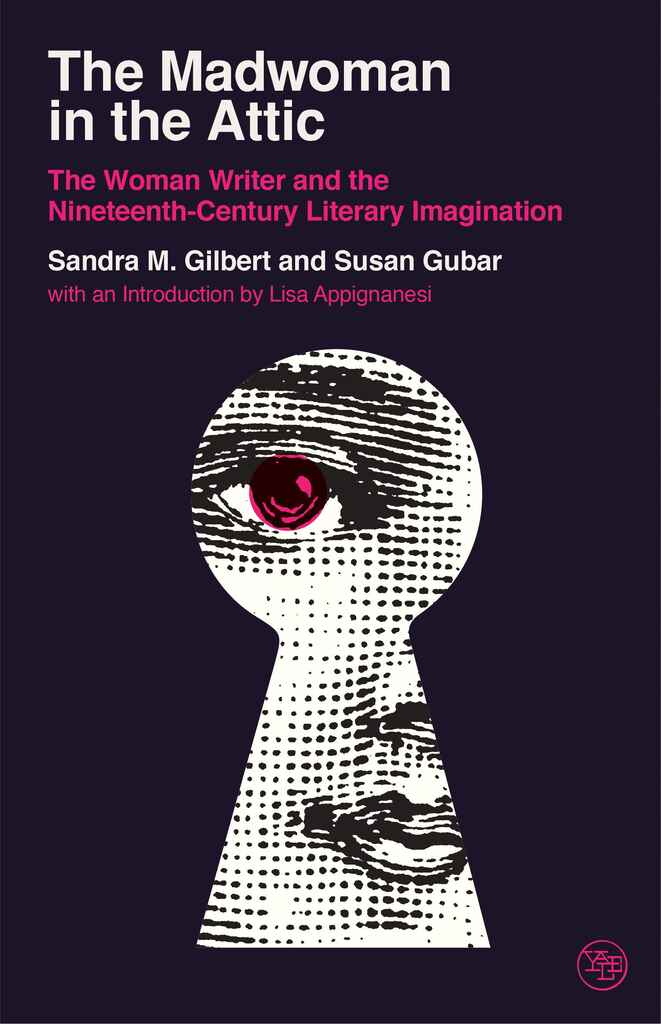
Take The Madwoman in the Attic by Sandra M. Gilbert and Susan Gubar, a seminal work approaching Victorian literature from a feminist perspective. Written as a conversation between two friends and academics, this brilliant book reads like an intellectual brainstorming session in a casual dining venue. Highly original, accessible, and not suffering from the morose gravitas academia is often associated with, this text is a fantastic example of creative nonfiction.
Tip: Remember to make your critiques creative
Literary criticism may be a serious undertaking, but unless you’re trying to pitch an academic journal, you’ll need to be mindful of academic jargon and convoluted sentence structure. Don’t forget that the point of popular literary criticism is to make ideas accessible to readers who aren’t necessarily academics, introducing them to new ways of looking at anything they read.
If you’re not feeling confident, a professional nonfiction editor could help you confirm you’ve hit the right stylistic balance .

Give your book the help it deserves
The best editors, designers, and book marketers are on Reedsy. Sign up for free and meet them.
Learn how Reedsy can help you craft a beautiful book.
Is creative nonfiction looking a little bit clearer now? You can try your hand at the genre , or head to the next post in this guide and discover online classes where you can hone your skills at creative writing.
Join a community of over 1 million authors
Reedsy is more than just a blog. Become a member today to discover how we can help you publish a beautiful book.

Bring your publishing dreams to life
The world's best editors, designers, and marketers are on Reedsy. Come meet them.

1 million authors trust the professionals on Reedsy. Come meet them.
Enter your email or get started with a social account:
Become a Bestseller
Follow our 5-step publishing path.
Fundamentals of Fiction & Story
Bring your story to life with a proven plan.
Market Your Book
Learn how to sell more copies.
Edit Your Book
Get professional editing support.
Author Advantage Accelerator Nonfiction
Grow your business, authority, and income.
Author Advantage Accelerator Fiction
Become a full-time fiction author.
Author Accelerator Elite
Take the fast-track to publishing success.
Take the Quiz
Let us pair you with the right fit.
Free Copy of Published.
Book title generator, nonfiction outline template, writing software quiz, book royalties calculator.
Learn how to write your book
Learn how to edit your book
Learn how to self-publish your book
Learn how to sell more books
Learn how to grow your business
Learn about self-help books
Learn about nonfiction writing
Learn about fiction writing
How to Get An ISBN Number
A Beginner’s Guide to Self-Publishing
How Much Do Self-Published Authors Make on Amazon?
Book Template: 9 Free Layouts
How to Write a Book in 12 Steps
The 15 Best Book Writing Software Tools
Examples of Creative Nonfiction: What It Is & How to Write It
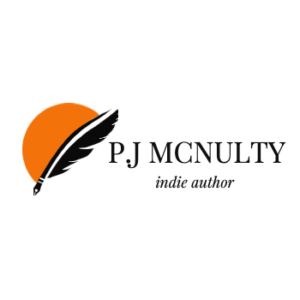
When most people think of creative writing, they picture fiction books – but there are plenty of examples of creative nonfiction. In fact, creative nonfiction is one of the most interesting genres to read and write. So what is creative nonfiction exactly?
More and more people are discovering the joy of getting immersed in content based on true life that has all the quality and craft of a well-written novel. If you are interested in writing creative nonfiction, it’s important to understand different examples of creative nonfiction as a genre.
If you’ve ever gotten lost in memoirs so descriptive that you felt you’d walked in the shoes of those people, those are perfect examples of creative nonfiction – and you understand exactly why this genre is so popular.
But is creative nonfiction a viable form of writing to pursue? What is creative nonfiction best used to convey? And what are some popular creative nonfiction examples?
Today we will discuss all about this genre, including plenty of examples of creative nonfiction books – so you’ll know exactly how to write it.
This Guide to Creative Nonfiction Covers:
Need A Nonfiction Book Outline?
What is Creative Nonfiction?
Creative nonfiction is defined as true events written about with the techniques and style traditionally found in creative writing . We can understand what creative nonfiction is by contrasting it with plain-old nonfiction.
Think about news or a history textbook, for example. These nonfiction pieces tend to be written in very matter-of-fact, declarative language. While informative, this type of nonfiction often lacks the flair and pleasure that keep people hooked on fictional novels.
Imagine there are two retellings of a true crime story – one in a newspaper and the other in the script for a podcast. Which is more likely to grip you? The dry, factual language, or the evocative, emotionally impactful creative writing?
Podcasts are often great examples of creative nonfiction – but of course, creative nonfiction can be used in books too. In fact, there are many types of creative nonfiction writing. Let’s take a look!
Types of creative nonfiction
Creative nonfiction comes in many different forms and flavors. Just as there are myriad types of creative writing, there are almost as many types of creative nonfiction.
Some of the most popular types include:
Literary nonfiction
Literary nonfiction refers to any form of factual writing that employs the literary elements that are more commonly found in fiction. If you’re writing about a true event (but using elements such as metaphor and theme) you might well be writing literary nonfiction.
Writing a life story doesn’t have to be a dry, chronological depiction of your years on Earth. You can use memoirs to creatively tell about events or ongoing themes in your life.
If you’re unsure of what kind of creative nonfiction to write, why not consider a creative memoir? After all, no one else can tell your life story like you.
Nature writing
The beauty of the natural world is an ongoing source of creative inspiration for many people, from photographers to documentary makers. But it’s also a great focus for a creative nonfiction writer. Evoking the majesty and wonder of our environment is an endless source of material for creative nonfiction.
Travel writing
If you’ve ever read a great travel article or book, you’ll almost feel as if you’ve been on the journey yourself. There’s something special about travel writing that conveys not only the literal journey, but the personal journey that takes place.
Writers with a passion for exploring the world should consider travel writing as their form of creative nonfiction.
For types of writing that leave a lasting impact on the world, look no further than speeches. From a preacher’s sermon, to ‘I have a dream’, speeches move hearts and minds like almost nothing else. The difference between an effective speech and one that falls on deaf ears is little more than the creative skill with which it is written.
Biographies
Noteworthy figures from history and contemporary times alike are great sources for creative nonfiction. Think about the difference between reading about someone’s life on Wikipedia and reading about it in a critically-acclaimed biography.
Which is the better way of honoring that person’s legacy and achievements? Which is more fun to read? If there’s someone whose life story is one you’d love to tell, creative nonfiction might be the best way to do it.
So now that you have an idea of what creative nonfiction is, and some different ways you can write it, let’s take a look at some popular examples of creative nonfiction books and speeches.
Examples of Creative Nonfiction
Here are our favorite examples of creative nonfiction:
1. In Cold Blood by Truman Capote
No list of examples of creative nonfiction would be complete without In Cold Blood . This landmark work of literary nonfiction by Truman Capote helped to establish the literary nonfiction genre in its modern form, and paved the way for the contemporary true crime boom.
2. A Moveable Feast by Ernest Hemingway
Ernest Hemingway’s A Moveable Feast is undeniably one of the best creative memoirs ever written. It beautifully reflects on Hemingway’s time in Paris – and whisks you away into the cobblestone streets.
3. World of Wonders by Aimee Nezhukumatathil
If you’re looking for examples of creative nonfiction nature writing, no one does it quite like Aimee Nezhukumatathil. World of Wonders is a beautiful series of essays that poetically depicts the varied natural landscapes she enjoyed over the years.
4. A Walk in the Woods by Bill Bryson
Bill Bryson is one of the most beloved travel writers of our time. And A Walk in the Woods is perhaps Bryson in his peak form. This much-loved travel book uses creativity to explore the Appalachian Trail and convey Bryson’s opinions on America in his humorous trademark style.
5. The Gettysburg Address by Abraham Lincoln
While most of our examples of creative nonfiction are books, we would be remiss not to include at least one speech. The Gettysburg Address is one of the most impactful speeches in American history, and an inspiring example for creative nonfiction writers.
6. I Know Why the Caged Bird Sings by Maya Angelou
Few have a way with words like Maya Angelou. Her triumphant book, I Know Why the Caged Bird Sings , shows the power of literature to transcend one’s circumstances at any time. It is one of the best examples of creative nonfiction that truly sucks you in.
7. Hiroshima by John Hershey
Hiroshima is a powerful retelling of the events during (and following) the infamous atomic bomb. This journalistic masterpiece is told through the memories of survivors – and will stay with you long after you’ve finished the final page.
8. Eat, Pray, Love by Elizabeth Gilbert
If you haven’t read the book, you’ve probably seen the film. Eat, Pray, Love by Elizabeth Gilbert is one of the most popular travel memoirs in history. This romp of creative nonfiction teaches us how to truly unmake and rebuild ourselves through the lens of travel.
9. Me Talk Pretty One Day by David Sedaris
Never has language learning brought tears of laughter like Me Talk Pretty One Day . David Sedaris comically divulges his (often failed) attempts to learn French with a decidedly sadistic teacher, and all the other mishaps he encounters in his fated move from New York to Paris.
10. The Glass Castle by Jeannette Walls
Many of us had complicated childhoods, but few of us experienced the hardships of Jeannette Walls. In The Glass Castle , she gives us a transparent look at the betrayals and torments of her youth and how she overcame them with grace – weaving her trauma until it reads like a whimsical fairytale.
Now that you’ve seen plenty of creative nonfiction examples, it’s time to learn how to write your own creative nonfiction masterpiece.
Tips for Writing Creative Nonfiction
Writing creative nonfiction has a lot in common with other types of writing. (You won’t be reinventing the wheel here.) The better you are at writing in general, the easier you’ll find your creative nonfiction project. But there are some nuances to be aware of.
Writing a successful creative nonfiction piece requires you to:
Choose a form
Before you commit to a creative nonfiction project, get clear on exactly what it is you want to write. That way, you can get familiar with the conventions of the style of writing and draw inspiration from some of its classics.
Try and find a balance between a type of creative nonfiction you find personally appealing and one you have the skill set to be effective at.
Gather the facts
Like all forms of nonfiction, your creative project will require a great deal of research and preparation. If you’re writing about an event, try and gather as many sources of information as possible – so you can imbue your writing with a rich level of detail.
If it’s a piece about your life, jot down personal recollections and gather photos from your past.
Plan your writing
Unlike a fictional novel, which tends to follow a fairly well-established structure, works of creative nonfiction have a less clear shape. To avoid the risk of meandering or getting weighed down by less significant sections, structure your project ahead of writing it.
You can either apply the classic fiction structures to a nonfictional event or take inspiration from the pacing of other examples of creative nonfiction you admire.
You may also want to come up with a working title to inspire your writing. Using a free book title generator is a quick and easy way to do this and move on to the actual writing of your book.
Draft in your intended style
Unless you have a track record of writing creative nonfiction, the first time doing so can feel a little uncomfortable. You might second-guess your writing more than you usually would due to the novelty of applying creative techniques to real events. Because of this, it’s essential to get your first draft down as quickly as possible.
Rewrite and refine
After you finish your first draft, only then should you read back through it and critique your work. Perhaps you haven’t used enough source material. Or maybe you’ve overdone a certain creative technique. Whatever you happen to notice, take as long as you need to refine and rework it until your writing feels just right.
Ready to Wow the World With Your Story?
You know have the knowledge and inspiring examples of creative nonfiction you need to write a successful work in this genre. Whether you choose to write a riveting travel book, a tear-jerking memoir, or a biography that makes readers laugh out loud, creative nonfiction will give you the power to convey true events like never before.
Who knows? Maybe your book will be on the next list of top creative nonfiction examples!
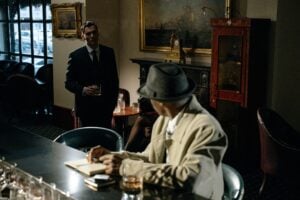
Protagonist vs Antagonist: The Difference Explained
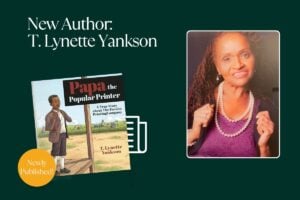
Elite Author T. Lynette Yankson Teaches Perseverance in Her Children’s Book About a True Story
Children's Book, Non-Fiction
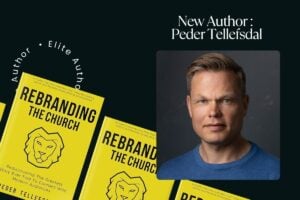
Elite Author Peder Tellefsdal Is On a Mission to Rebrand the Church with His New Book
Non-Fiction
Join the Community
Join 100,000 other aspiring authors who receive weekly emails from us to help them reach their author dreams. Get the latest product updates, company news, and special offers delivered right to your inbox.
Essays About Creative Non-Fiction: Top 5 Examples and 10 Prompts
Check out our essay examples and writing prompts guide if you’re writing essays about creative non-fiction.
Creative non-fiction is a skilled and artistic way of telling stories based on true accounts, facts, and interviews. It can include essays, long-form articles, or books. Writing creative non-fiction can be very challenging when writing a literary work as it combines in-depth research and authentic, creative storytelling.
This work requires great attention to detail and getting the facts straight while keeping your readers engaged with your imaginative writing style. In short, authors of creative non-fiction enjoy the best — as well as the paramount challenges — of both the journalistic and poetic worlds.
| IMAGE | PRODUCT | |
|---|---|---|
| Grammarly | ||
| ProWritingAid |
5 Intriguing Essay Examples
- 1. Whatever You Write, There You Are by Kristen Martin
2. The 5 Rs Of Creative Nonfiction Story by Lee Gutkind
3. svetlana alexievich’s nobel prize is a huge win for nonfiction writing by katy waldman, 5. legends of the fall by chiqui jabson chua, 1. types of creative non-fiction writing, 2. creative non-fiction writing tips, 3. a personal memoir, 4. a travel guide and experience essay, 5. business writing, 6. a memorable family gathering, 7. the story behind a painting, 8. creative non-fiction works you love, 9. an unforgettable lesson in class, 10. the person who inspires you the most, 1. whatever you write, there you are by kristen martin.
“Creative nonfiction can take many forms, be it a meandering lyric essay or long-form narrative journalism, and its practitioners don’t always agree on how creative one can be with the truth.”
For the most part, the authors of creative non-fiction have to constantly choose between sharing their personal experiences and the universal. While creative non-fiction seems biased toward the latter, authors surprisingly understand their inner selves more deeply when they embark on an outward journey to explore material facts. Nine creative non-fiction authors share their experiences of this so-called “backdoor memoir” phenomenon.
“What is most important and enjoyable about creative nonfiction is that it not only allows but encourages the writer to become a part of the story or essay being written. The personal involvement creates a special magic that alleviates the suffering and anxiety of the writing experience; it provides many outlets for satisfaction and self-discovery, flexibility and freedom.”
Gutkind lets readers into his 5R techniques of being a creative non-fiction journalist. These Rs are real, reflection, research, reading, and riting. This immersion journalist, whose extensive experience included participating in an open-heart surgery as a wallflower observer, talks about the main elements of creative non-fiction while writing one along the way.
“After conducting hundreds of interviews, she arranges people’s intimate testimonies into a choir of almost impersonal witness; the resulting works have been called “novels-in-voices,” immersions in experience that are governed by a fierce, purposeful intellect.”
The Swedish Academy surprised the world in 2015 as it awarded the Nobel Prize for Literature to a creative non-fiction writer, marking a first in half a century since it happened. The move makes a resounding statement in the literary world on the essence of reportorial documentation after years of its unacceptance and criticism as a literary work.
4. Africa’s Cold Rush And The Promise Of Refrigeration by Nicola Twilley
“Over the next four or five hours, as the heat of the day sets in, gradually wilting the cassava leaves and softening the tomatoes, these men will cover hundreds of miles, carrying food from the countryside to sell in markets in the capital, Kigali.”
In this remarkably creative non-fiction, a journalist poignantly and painstakingly chronicles the daily hardships in Rwanda, where men rise before dawn and help bring food to the market in the next town, often just in the nick of time before spoilage. Twilley immerses in Rwanda and its cold chain problem, interviewing scientists, cold economy experts, and policymakers who all work toward making refrigeration happen for the African country.
“In the foothills of western Kyoto, towering bamboo trees sway in the mild wind, turning the sunlight into a delicate jade. Nearby, temples and villas sit amid fine gardens and, not too far uphill, a town pulsates with living traditions from ancient Japan.”
This article is an enjoyable descriptive non-fiction piece, giving us a Kyoto tour in early fall and autumn. We follow the author on her commute through an urban neighborhood, up to the mountain, and into one temple after another. With the author’s vivid imagination and ingenuity for words, the readers are led on to a journey in Japan as though they are experiencing firsthand the stillness of Kyoto’s green trails and the serene beauty of its mountainous landscape.
10 Great Writing Prompts on Essays About Creative Non-fiction
List down the many types of creative non-fiction and explain how they simultaneously promote the presentation of facts and creative storytelling. Like this guide, you may also find your best picks for each type of creative non-fiction.
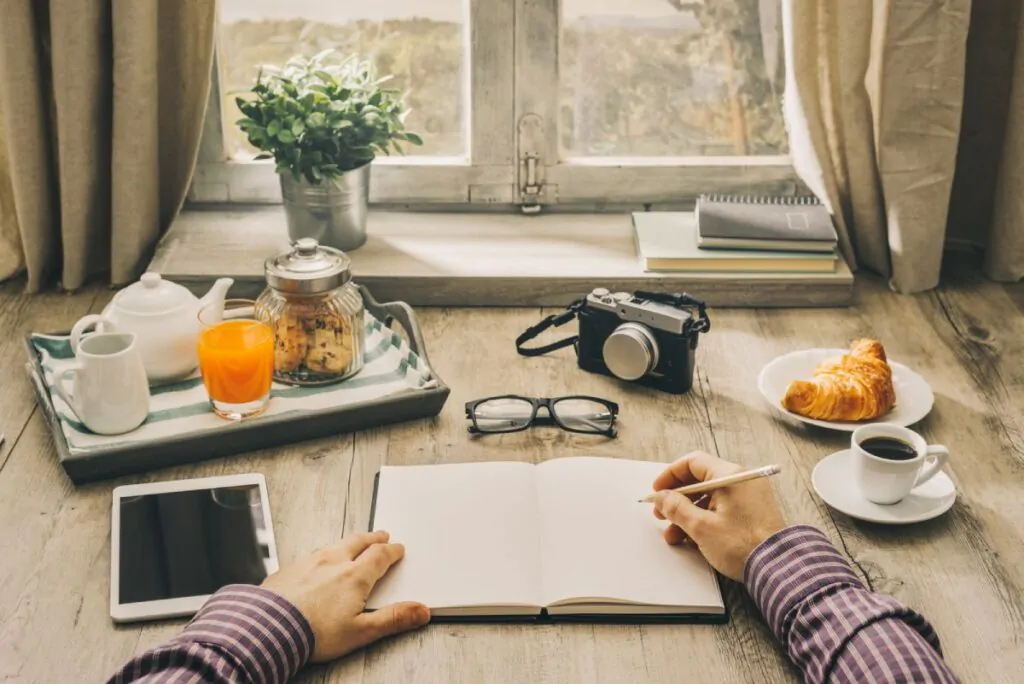
Taking tips from some of the essay examples above, determine the common denominators in the authors’ techniques in producing creative non-fictional works. Then, explain how these techniques helped the authors achieve their desired effects.
If you were to write your memoir, what events would you be putting in the spotlight? For your essay, imagine how you would structure your memoir. You can choose either a sad or joyous event. What matters the most is to describe memorable experiences so that you can narrate them in exact detail. To ensure your essay will enthrall your readers, read our storytelling guide .

Traveling creates wanderlust, a desire to feed yourself with new information and experiences. For this easy, recall a trip, or embark on a new adventure. First, write about the culture of the place and the people around you. Next, describe the place and culture and share the most important lessons you have learned from this adventure. Finally, describe the other future adventures you’d like to go on.
Business writing is not a usual source of attraction for several writers — especially for writers who chose to write because they despised math. There are joys never imagined in weaving stories from numbers. In this essay, offer your readers some tips to enjoy and make a profit in writing creative non-fictional pieces about business.
For this writing prompt, recount a memorable gathering with family and relatives. To make this pass as creative non-fiction, first detail the purpose of the gathering, the settings, and the decorations as vividly as you can. Then, describe each family member present and their unique qualities that make them unforgettable. Finally, recount the conversations and the emotions surging in you as they chattered away.
Pick a painting that captivates you the most and try to peel into its layers of meaning by researching its history, the stories, and the people that inspired the painter of the work. Next, try to mull the connection between the painting’s story and yours. This could explain what made you entranced at first glance.
If there are creative non-fiction literary works that have shaped who you are today, talk about them in your essay and elaborate on the reasons you have admired the author’s thoughts. Then, convince your readers to pick up this book to see their self-transformation.
Some classroom lessons succeed in keeping us engrossed in learning. Some could form the foundations of a hobby, while some could be our first step toward a professional career path. In this essay, reminisce on a class lecture you will never forget. Explain briefly what the subject matter was at the time and what your professor said about it that was forever etched on your memory.
Each of us has an idol we look up to as an inspiration to reach our goals, whether a historical figure, a fictional character, or a living personality. Share yours and write a piece of creative non-fiction about their story as a hero. Then, point out their qualities, achievements, or advocacies that made you realize your bigger ambitions, find confidence, and believe in yourself.
If you liked this article and want to put these ideas into practice, check out our round-up of storytelling exercises .
10 Types of Creative Nonfiction Books and Genres and How to Write It
- June 15, 2024
- Script Writing
Table of Contents Hide
What is creative nonfiction, 1. scene setting, 2. character development, 3. narrative, 4. subjectivity, #2. personal essay, #3. travel writing, #4. literary journalism, #5. features, #6. cultural criticism, #7. ekphrastic essays, #8. lyric essay, #9. hermit crabs & other borrowed forms, #10. flash nonfiction, how to write creative nonfiction: the 5 r’s, recommendation.
People always thought creative writing was all about fiction. Take a wild guess, what can be creative about nonfiction? It is already nonfiction and factual, so, no form of creativity is entertained, right?
You are absolutely wrong!
Creativity goes into fiction as much as it does in nonfiction.
In fact, I can argue that the creativity involved in nonfiction may be similar when juxtaposed. Well, that’s not the basis of this writing.
Moving forward, learn all about creative nonfiction, including its types, elements, and how to write it.
Creative nonfiction (CNF) is a way of telling stories that uses literary elements like poetry and fiction to tell real stories in a new way.
Creative nonfiction writers don’t just tell funny stories; they use craft and technique to pull the reader into their own lives. Poetic and fictional elements, like conceit and juxtaposition, as well as story arcs and character growth, work together to make a story that makes sense.
See also: How Many Word Count Are in a Novel? Word Count by Genre
4 Elements of Creative nonfiction
The main difference between creative nonfiction and regular nonfiction is the use of literary tools and methods. Creative nonfiction should have people and events that are based on real events, but it should also be written in a way that draws the reader in on purpose.
The following are elements of creative nonfiction:
To completely immerse readers in a scene, writers focus on certain features of a time and place. Metaphor, simile, and imagery are examples of literary elements that might help with this.
Genuine people, like real people, have goals, backgrounds, and distinguishing features. Dialogue, vivid characterization, and flashbacks are all common literary themes used in creative nonfiction.
As with books, creative nonfiction works have a beginning, middle, climax, and end. The narrative of the story is the order in which these events occur. Using different narrative models, the author can guide the reader’s attention and set the pace of the story.
In traditional nonfiction, the author keeps personal opinion a bay from the topic. Creative nonfiction, on the other hand, can infuse the writer’s point of view, feelings, and insights into the story. This is especially true for personal essays, which are usually written in the first person.
Creative nonfiction uses fiction’s chapters, acts, nonlinear timelines, and pacing as structural components. Writers of creative nonfiction blend events into narratives that flow naturally and keep readers’ attention from start to finish. However, the facts remain the most important element.

10 Types of Nonfiction Books and Genres
What are the types of nonfiction? Let’s examine common forms of the genre in detail.
Memoirs, one of the most popular types of creative nonfiction, describe the author’s personal experiences. Unlike autobiographies, memoirs do not need to be encyclopedic. Memoirs are one of the most straightforward types of creative nonfiction to write!
Memoirs, which narrate the author’s personal life, are one of the most popular types of creative nonfiction.
Memoirs are narrative works that frequently connect the author’s personal experiences to universal human concerns such as family, youth, and sadness.
Check out Helen Macdonald’s H is for Hawk, which explains the year she spent training a northern goshawk after her father died, to see what this means in practice.
But memoirs can be longer than articles. Memoir works are regularly grouped into essay collections and are a great starting point for a book project!
A personal essay, like a memoir, is based on the author’s own life and viewpoint and often provides the reader with a close-knit experience. However, personal essays are less narrative in form. Rather, the activity is usually inward-focused and mentally motivated.
Because of this, difficult-to-answer problems are commonly addressed in personal essays. The reader feels joy in watching the author attempt to handle difficult themes in a thought-provoking way. This is entirely in line with the meaning of “essay,” which is “to try.”
Personal essays are less narrative-focused. Rather, it is usually inward-focused and mentally motivated.
Memoirs hint at larger human themes, but personal essays create a direct link between societal narratives and the individual’s experience. In fact, personal experience is used as the stories and evidence. Personal essays use braiding, which is a structure that makes alternating from personal stories to a larger story possible when illustrating the connection between the person and society.
Nonfiction travel writing can take many different forms, including travel guides, blogs, journalism, and memoirs. Whatever the style, great travel writing allows readers to picture and interact with an unfamiliar environment.
Thus, travel writers employ sensory-engaging prose that transports you to a place you would not otherwise visit.
A well-written travel essay helps readers visualize and experience a strange place.
There are times when the writer’s mental trip takes precedence over the thrill of travel.
Literary journalism, sometimes known as “immersion journalism,” “narrative journalism,” or “new journalism,” is a type of nonfiction writing that combines reporting with creative writing methods and approaches, such as character development.
Literary journalists frequently write in the first or third-person limited viewpoint. Instead of simply delivering information, such works seek to spark a deeper conversation among their readers.
Literary journalism is a subgenre of nonfiction writing that blends reporting with creative writing methods and approaches, such as character development.
A feature is a longer style of journalism than a news story, with the main goal of informing the reader about recent developments in the story’s facts. Features can provide a different perspective on a current subject or more in-depth coverage. Most importantly, features do not need to cover breaking news. This style of writing is more interesting and usually incorporates different perspectives. The writer has more room to play with style and structure.
Literary writing does not always take the form of a feature, though it can. Feature pieces can take several forms, including news features, trend reports, profiles, immersive features, and “creative” features based on the author’s personal experiences. As a result, features appear in many media outlets, including literary journals and newspapers.
See also: Point of View vs Perspective: Differences and Examples for Writers
This type of nonfiction investigates and offers criticism on a cultural element or artifact.
Cultural criticism generally examines little things to draw connections between them and larger cultural contexts. This is not to say that writing about culture must be abstract or broad. In fact, many cultural critics use their personal experiences as a starting point for more in-depth cultural debate.
The Greek word for “description,” ekphrasis, is commonly used to describe poetry written about a work of visual art. However, in modern literature, ekphrasis can be used in nearly any type of writing, including poetry and prose.
Ekphrasis is the use of poetry or prose to explain another work of art .
There are many ways to write an ekphrastic essay. These could be analytical articles on art, memoirs on your experiences, or the more creative method of speculating about the components of an artwork.
The nonfiction prose used in the lyric essay is more poetic and concise.
The lyric essay is a relatively new genre that uses more poetic and condensed nonfiction writing. As a result, it is commonly referred to as a poetry-nonfiction hybrid. Although the definition of a lyric essay remains unclear, the following characteristics apply to this genre:
A focus on language and figurative means rather than argument.
a focus on experience and research rather than reporting. Even though lyric essays usually incorporate extensive research, they do so in a suggestive manner, leaving gaps for the reader to draw their own conclusions.
A tendency to meditate. Even though lyric essays frequently use study and direct experience, their emphasis is on contemplative writing skills rather than producing a coherent tale or storyline.
Examples of lyric essays include Claudia Rankine’s Citizen: An American Lyric, Maggie Nelson’s Bluets, Amy Leach’s Things That Are, and Kathryn Nuernberger’s The Witch of Eye.
The hermit crab, introduced in 2003 by Brenda Miller and Suzanne Paola in their book Tell it Slant: Writing and Shaping Creative Nonfiction, adds a wonderful variety to the nonfiction prose styles used in current creative nonfiction.
Coined in 2003 by Brenda Miller and Suzanne Paola in their book Tell it Slant: Writing and Shaping Creative Nonfiction, the hermit crab adds a delightful variety to the types of nonfiction prose in contemporary creative nonfiction. The essay The Hermit Crab repurposes everyday forms—things we don’t usually conceive of as “literary”—as formats for creative nonfiction. A hermit crab, for example, may use the structure of a crossword puzzle, recipe, FAQ, or how-to manual.
Such texts generally discuss delicate or prickly issues (thus the allusion to the soft-bodied hermit crab that hunts for shells to live in).
See also: What Is a Narrative Arc (or Story Arc)? All You Need to Know
Flash nonfiction essays run from a few hundred to two thousand words in length, however most publications only allow one thousand words. Precision and compression are stressed in flash nonfiction. It pushes the limits of how much you can hint at or how much plot you can tell in a few hundred words..
Lee Gutkind created a structure called the “5 R’s” of CNF writing. The five Rs work together to provide a solid foundation for all creative writing tasks. They are as follows:.
Write about real life: In creative nonfiction, write about actual people, real places, and genuine events that have happened or are now occurring.
Conduct extensive research: Learn everything you can about the problem in order to improve and broaden your ability to express it effectively.
(W)rite a narrative: Use storytelling strategies drawn from fiction, such as Freytag’s Pyramid, to structure the narrative of your CNF piece as a literary tale rather than a straightforward recount.
Include personal reflection: Give the narrative you’re reciting your own voice and view.
Learn by reading: Reading excellent creative nonfiction is the best way to improve your own writing style. Consume as much CNF as possible, paying close attention to how the author’s choices impact you as a reader.
- Grammarly – types and elements of creative nonfiction
- Writers.com – types and elements of creative nonfiction
- 7 Best Websites to Hire Freelancers for Narrative Writing in Africa
- What is 3rd (Third) Person Limited Point Of View?
- How to Write and Publish Your Poetry Book
Related Posts
How to start off a story: 10 top tips for literary writers, what is a narrative arc (or story arc) all you need to know.
- April 29, 2024
How To Write A Top-Notch YouTube Video Script | Sample
- February 9, 2024
Purdue Online Writing Lab Purdue OWL® College of Liberal Arts
Finding Your Footing: Sub-genres in Creative Nonfiction

Welcome to the Purdue OWL
This page is brought to you by the OWL at Purdue University. When printing this page, you must include the entire legal notice.
Copyright ©1995-2018 by The Writing Lab & The OWL at Purdue and Purdue University. All rights reserved. This material may not be published, reproduced, broadcast, rewritten, or redistributed without permission. Use of this site constitutes acceptance of our terms and conditions of fair use.
Memoir is perhaps the “flagship” of creative nonfiction, the sub-genre most familiar to those outside of literary and academic circles. Most human beings lead interesting lives filled with struggle, conflict, drama, decisions, turning points, etc.; but not all of these stories translate into successful memoir. The success of the memoir depends on the writer’s ability to sequence events, to tell a story, and to describe characters in believable ways, among other things. Writer Carol Spindel reminds us that in the mid-2000s a scandal surrounding writer James Frey’s A Million Little Pieces erupted after he was forced to admit that large sections of his “memoir” were “fictionalized:” he’d embellished, made things up. A memoir that strays from the truth is not far removed from lying, because regardless of the writer’s intention, the story deceives the reader. Spindel writes that, unlike in novels, “The knowledge expressed in the memoir has the legitimacy acquired through first-hand experience.” Good memoir also provides reflection on the events that have happened to the writer, so it “can give readers insights into society, and even into the larger meaning of life itself” (Spindel).
The Braided Essay
The braided essay is a good tool for introducing writers—especially student writers—to the CNF genre. In a braided essay, the writer has multiple “threads” or “through-lines” of material, each on a different subject. The essay is broken into sections using medial white space, lines of white space on a page where there are no words (much like stanzas in poetry), and each time there is a section break, the writer moves from one “thread” to another. Braided essays take their name from this alternating of storylines, as well as from the threads the story contains; there are usually three, though to have four or two is also possible. Though there is not a strict formula for success, the form usually contains at least one thread that is very personal and based on memory, and at least one thread that is heavily researched. Often, the threads seem very disparate at first, but by the climax of the essay, the threads being to blend together; connections are revealed.
Topical Writing
Perhaps the genre closest to an essay or a blog post, topical writing is an author’s take on a given topic of specific interest to the reader. For example, nature writing and travel writing have been popular for centuries, while food writing is gathering steam via cooking blogs. Nature writing involves exploring the writer’s experience in a beautiful and thoroughly rendered natural setting, such as a cabin on a mountaintop. Travel Writing, as the name implies, details the writer’s experiences while traveling, whether by choice on a vacation or out of necessity due to business or serving in the military. Finally, contemporary food writing explores the writer’s connection to cooking and enjoying food of any variety. All three will occasionally step into the writer’s personal experiences via memories, but these episodes are always related to the topic driving the essay.
Whatever form a creative nonfiction piece takes, it must remain based in the author’s actual lived experiences and perceptions. Like academic writing, the piece must be accurately researched and the sources must be documented. Finally, the author must also always leave room to reflect on how their experiences have shaped them into the person they are now. It’s the reflection that makes the reader feel satisfied: it offers something to the reader that they can carry with them, a way of seeing the world.
Works Cited
Cokinos, Christopher. “Organized Curiosity: Creative Writers and the Research Life.” Writer’s Chronicle 42.7: April/May 2015. 92-104. Print.
Ironman, Sean. “Writing the Z-Axis: Reflection in the Nonfiction Workshop.” Writer’s
Chronicle 47.1: September 2014. 42-49. Print.
Spindel, Carol. "When Ambiguity Becomes Deception: The Ethics of Memoir." Writer's
Chronicle (2007): n. pag. AWP . Association of Writing Programs, 1 Dec. 2007. Web. 13
Sept. 2015.
Terrill, Richard. "Creative Nonfiction and Poetry." Writer's Chronicle (2004): n. pag. AWP .
Association of Writing Programs, Oct.-Nov. 2004. Web. 3 Oct. 2015.
Matador Original Series
16 nonfiction forms and how to write them.
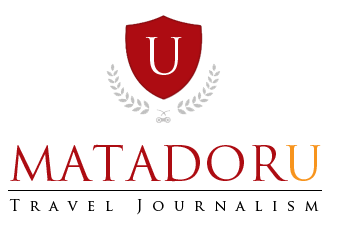
NONFICTION describes communicative work (typically written, but also including diagrams and photos) understood to be fact . Implicit in this, however, are the varying degrees to which the writer’s subjective interpretation of facts, and/or selective presentation (i.e., withholding, distorting) of facts end up making a “factual” work less true.
Given this, an interesting way to delineate nonfiction forms is to look at them in terms of how accurately they reflect the writer’s experience, beliefs, and emotions in real life (IRL).
The above diagram is intended to be a kind of visual take on how this applies to typical forms of nonfiction. Below are notes and further explanations on different forms, along with tips on how to write them.
Advice Columns
Advice columns range in truthfulness from extremely close to fact (such as most sex writing, which we’ll get to later) to the kinds of financial, lifestyle, parenting, gaming, social media, and other advice articles and blogs that seem to have, at best, only tangential relationships with the writer’s actual experience IRL. These are the articles where titles implore you to do things like “Dress Up That Turkey Sandwich!” while, on the same homepage, also promise to explain “Why You’re Not Losing Weight.”
Tips : The key is volume. Use the Google Keyword Tool to create article ideas around keywords searched by the biggest potential audience, but with the fewest websites targeting those same keywords (i.e. low “competition”). Factor in your approximate knowledge of the subject vs. how long it would take you to copy / paste and then remix text from a similar article. Avoid subjects in which you’re emotionally invested. Employ a “detached but friendly” 2nd person POV (example: “Or if you’re feeling a little south of the border, top it off with some cilantro and roasted red pepper,”) which allows you to effectively obfuscate your own reality, such as writing an article on “healthy relationships” while in the middle of an affair / divorce / custody battle over children. Submit to: About.com, your own websites.
Copywriting / “Advertorial” / Ad copy
Copywriting is nonfiction that uses rhetoric to persuade readers to consume products / ideas / viewpoints. It’s often factual in only a nominal sense, and uses a variety of linguistic and psychological tactics to effectively remove the entire context of “true vs. false,” creating a kind of vacuum around the subject, a universe unto itself where no other time or space or culture or even logic seems to exist except for that which is suggested to and potentially “consummated” by the reader. Examples: signs advertising real estate saying “if you lived here you’d be home already,” or like “Cedar Ridge: Mountain Clusterhomes from the low 250s,” or comings attractions for kids’ movies that begin “From the magic within our hearts, to the adventure beyond the horizon, there is only one: Disney.”
Tips : Devise ways to suggest things that seem to come from an omniscient as opposed to personal POV. Study what motivates people to buy shit, and how this consumption expresses their personal brands. Submit to: your professor, the creative team for whatever marketing company you work for.
Creative Nonfiction
The label “creative nonfiction” can apply to various categories of writing, including food, travel, memoir, personal essay, and other hybridized forms. The defining characteristic of CN is the use of literary techniques to create a sense of artfulness in the language, character development, and story, all of which tends to drive the narrative “inward.” CN work also tends to focus on transformational events in the narrator’s or central character’s life. CN generally seems closer to the truth of the narrator’s experience than other forms of nonfiction, as revealing the narrator’s experience / emotional consequence of the experience often seems the implicit “goal” of the work.
CN sometimes ends up sounding “crafted” or “poetic,” however (example: “In an instant, the city was back to its normal self, yawning in the dawn haze,”), to the point where it can be difficult not to question whether a work really reflects what the writer actually felt / experienced or if he/she is more just attempting to showcase a certain brand of writing skills.
Tips : Write about events to which you have strong emotional connections. Write in present tense “I’m on a bus in Tel Aviv,” even though you’re actually at the library. Avoid any usage of your own common vernacular / slang / accent in your writing voice. Construct “closeup” scenes around images of ordinary household items – a fork, a shoe, a hanger – to give dark subtextual cues which eventually give rise to emotionally shattering conclusions. Compensate for lack of ground-level knowledge of terrain / vegetation / architecture by using poetic terminology (“canted ridges’). Use codified / cliched expressions for physical features (“unruly” or “a shock of” or “luxuriant” hair), movement (“braving a potholed road”), and weather patterns (clouds “scudding”) as these are commonly used by masters of the genre. Submit to: Creative Nonfiction , Best American Essays .
Experimental Nonfiction
From Koko, the “Talking” Gorilla
“Experimental” isn’t so much a form but a label often applied to various works not recognized as traditional nonfiction forms. This can include things like fragmented or nonlinear narratives, “flash” nonfiction, prose poems, work incorporating graphic or multimedia elements, and even, possibly, work that’s traditionally structured but which examines something to a degree or in a way not actualized by mainstream writers.
In other experimental works, the condition of the writer during the work’s composition is itself a central element, and can be deliberately manipulated via things like sleep deprivation, ingesting drugs and/or alcohol, etc. Depending on how much the work is a catalog of the writer’s inner world vs. a narrative of events IRL, this type of work sometimes falls into the old-school category of “navel-gazing.”
Much experimental work seems about creating an immediacy / proximity to the the writer’s experience and subconsciousness (check Blake Butler’s series “ I am drinking gin & wrote about 7 songs as they came up on random in my itunes while they played “), that the form uniquely expresses. In some way this can make for the truest of all nonfiction writing; however, there often seems to be an element of “performing” inherent in much experimental work that makes it come off feeling less true a reflection of the narrator’s experience, almost in the opposite way of creative nonfiction’s being overly crafted. It’s as if there’s still just as much editing and crafting behind the scenes to make experimental work appear unadulterated and raw. Maybe in the future we’ll have new forms (Google Wave had established this technology, actually) where you can see a “recording” of a work as it’s created in real time.
[For “flash” nonfiction]: Recreate scenarios where thoughts or realizations arose seemingly independent of external stimuli, while juxtaposing descriptions of the stimuli in a way that creates rich metaphorical possibilities and meaning for the reader. Isolate the thought / stimuli juxtaposition from any memories or sense of one’s connection to place / culture / family, as well as any personal interpretations of the “meaning,” so that the work seems to exist like its own self-contained universe, almost a kind of advertisement for this particular moment in your consciousness. Submit to: your twitter.
[For fragmented or nonlinear essays]: Overwhelm the reader with descriptions of external stimuli presented in short, rapid sentences so the overall effect is disorientation . Don’t be afraid of using sentence fragments. Add quotes and bits of dialogue without attributing them to “s/he said.” If a travel piece, create sense of expertise / authenticity via cultural references or phrases in other languages that 95% of you readers won’t understand. Go for a “sense of time passing” feel. Submit to: Brevity .
[For “altered states” work]: Catalog / narrate an event so seemingly superficial (ex: watching 80s-era Bones Brigade skate videos on YouTube), that it provokes the reader, instigating preconceptions and judgements re your writing or brand, only to then undermine / leverage those preconceptions with a demonstration of perspicacity, self-awareness, sensitivity, and philosophical, logical, and etymological references in an all out assault so complex and divergent and yet so coherent that you’re actually getting off on the writing, contextualizing the whole process as an act of self-affirmation. Points for using hip hop vernacular as if you grew up speaking that way. Submit to: HTMLGIANT .
Feral Journalism
This term was invented, as far as I know, by Daniel Britt , while traveling overland from Iraq through Iran and into Afghanistan on a German motorcycle with a leaky carburetor and living hand to mouth filing reports and selling photos to various media companies about the US Armed Forces’ withdrawal from Iraq (and deployment in Afghanistan), along with various fucked up juxtapositions of local people, contractors, soldiers, kids, dogs, and just the day to day life in a place where there’s generalized death and mayhem. At one point we had a skype chat from the US Army base in Shah Joy Afghanistan that went:
[2:23:27 PM] daniel c. britt: hey were getting mortared [2:23:47 PM] daniel c. britt: just one [2:23:55 PM] daniel c. britt: pussies [2:30:12 PM] david miller: damn [2:30:21 PM] david miller: like the base is getting mortared? [2:30:23 PM] david miller: wtf? [2:30:53 PM] daniel c. britt: one shell [2:31:04 PM] daniel c. britt: just inside the hescos [2:31:19 PM] daniel c. britt: dood we didnt even loose internet [2:31:26 PM] david miller: hell yeah [2:31:48 PM] david miller: dude did you get hooked up with body armor? [2:33:30 PM] daniel c. britt: yeah we found a dealer in kabul , totally ripped us off, its US interceptor gear though so itll stop a .762 round, supposedly point black. anyway tomorrow im going to start looking for ieds or possibly go on a mission to clear a weapons cache [2:34:22 PM] daniel c. britt: which ever i get illl stick with it for the next five days [2:34:29 PM] daniel c. britt: and that will be my story
Feral journalism follows from the same gonzo paradigm established by Hunter S. Thompson, only in a modern global context where you’re dealing with potentially getting kidnapped / beheaded / blown up by an IED. As the impact of a feral journalism piece often relies on the level of concrete detail and sense of the narrator’s authenticity, this type of nonfiction is typically very close to actual fact / experience.
Tips : Cultivate your narrator’s persona as having low bodyfat (though not via exercise, but heavy smoking / drugs, while, paradoxically, still retaining a high fitness level in terms of 100-yard dashes or other evasive parkour-like skills), and a zealous commitment not to some greater recognizable “cause,” but to documenting ground level struggles of local people in spots 87% of Americans could never identify on a map. Align yourself with other “crackpot” indie photographers and filmmakers. Submit work to: Matador , Guernica .
Field Notes
Raw, unedited field notes often contain the most veracious writing, only to have the images / intensity mollified when the work is prepared “for publication.”
Tips : Focus less on how to write your notes, and instead learn how to draw so you can share art + notes together. Submit: myMoleskine.
Food Writing
Along with sex, food writing should theoretically be the most veracious of all nonfiction forms. And it usually is. What acts reveal more about us than how we eat and how (and who) we fuck? Fans of Jason Sheehan or Jim Harrison would know this. Food writing diminishes in truthfulness, however, to the degree it becomes about the writer playing the role of a critic.
Tips : Remember that, as Wendell Berry said, eating is essentially an “agricultural act.” Create metaphorical vectors between, say, Malbec grapes grown in the Andes, Colorado grass-fed beef, and the need for a palliative meal post breakup with your girlfriend. Submit to: your local alt. weekly.
People still do live person to person interviews a la Truman Capote-style (ex: San Quentin ), which have traditionally been about revealing candid moments (although this in and of itself doesn’t make an interview factual). It seems, however, that the “interview” as a form is becoming just a way for one writer (or artist / musician / whatever) to align his or her brand with another’s and/or create easy content via email conversations. Gchats often seem realer in that they’re live and you can see how much time goes by before each person responds. Not sure.
Tips : Ask questions about what the subject will be doing after the interview, or has just finished doing, focusing on quotidian things whose answers reveal the subject’s life as existing in a continuum, not just as a chain of projects / goals / accomplishments orbiting the internet. Submit to: The Nervous Breakdown .
Nature Writing
Although wikipedia’s list of contemporary nature writers includes authors (Rick Bass, Barry Lopez, Linda Hogan, John McPhee, and Gary Snyder) that have been important to me at different times of my life, I feel like as a genre, most nature writing seems to follow a tradition set forward by Thoreau where everything, even moments of the apparent suffering, are rendered in pastoral language (or something), which pushes it farther from fact than say, Big Boi rhyming about collard greens.
Tips : Isolate yourself in a wilderness area with field guides for all relevant flora and fauna as well as natural histories and any first hand accounts of indigenous people who once lived there. Either (a) leave out any mention of descendants of those native peoples or other people who might still exist in the area (such as in nearby trailer parks), and the truth of whose day to day existence might undermine your portrait of “place,” or (b) objectify / romanticize their “condition.” Have epiphanies. Submit to: Orion .
News reports
News reports are among the least factual of all nonfiction forms. Particularly with mainstream media companies, news reports are often team projects – each team tasked with creating news “packages” around current events. These packages often rely on old / recycled stories whose research and fact-checking may or may not be accurate. What seems to matter is that the delivery is on brand, professional, and “timely.”
Tips : Practice your skills at personification, so that famines are described as “stalking” the Horn of Africa, or torrential rains are “sweeping” / tornadoes “ripping.” Use “BREAKING” in all caps to your advantage. Type fast. Submit to: your section editor / Huffington Post.
Op-ed / Social Commentary
Whereas social commentary and op-ed traditionally used rhetoric to promote change, in a modern (or more accurately, post-modern) context, social commentary tends to be truthful to the degree in which it reveals the narrator’s experience and emotions without necessarily suggesting any kind of change.
Tips : Subvert traditional forms such as “how to’s” or “top 5” articles by using hyperpersonal information and narrative that’s theoretically impossible to “follow,” and yet is still presented as advice. Remember that it’s always easier to sound smart when you’re criticizing something. Submit to: Thought Catalog .
Round-ups / Top 10 lists / “Best of” Lists
As demonstrated by David Letteman, ESPN, and now what seems like 68% of all websites, roundups draw attention by creating a sense of anticipation in the reader or viewer. Along with news reports, roundups are the least veracious of all nonfiction forms.
Tips : Identify potentially divisive content areas, that “pit” one person’s opinion against another, for example, “Barbecue Sauce,” then collect barbecue sauce information via internet, rounding up and ranking info either arbitrarily or according to SEO / keyword traffic, crafting the title (“Top 5 Barbecue Sauces in America”) so that people within the relevant geographic / subject area wonder if their preferences are either being (a) validated, (b) rejected, or (c) ignored, and thus compelling them to read / comment.
Sex Writing
Sex Writing (ex: Dan Savage ) is among the truest of all nonfiction forms when the writer essentially removes or frees him/herself from any sense of holding back information / emotions due to cultural taboos. Conversely, this level of truth seems to diminish when the work seems deliberately about manipulating these taboos to “shock.”
Tips : Not sure, except for allowing people to ask questions anonymously.
Travel Blogs
As a form it seems like the more popular the travel blog, the more it reflects not truth, but a writer’s effectiveness at reducing complex, nuanced elements of culture and place and packaging them in “travel-sized” bits. I can’t ever read “popular” travel blogs without a sense that the writer is withholding 95% of what actually happened or how s/he felt about it because it would alienate his / her followers.
Discover Matador
Adventure travel, train travel, national parks, beaches and islands, ski and snow.
We use cookies for analytics tracking and advertising from our partners.
For more information read our privacy policy .
Matador's Newsletter
Subscribe for exclusive city guides, travel videos, trip giveaways and more!
You've been signed up!
Follow us on social media.

Types of Nonfiction: A Comprehensive Guide for Writers
by Harry Wallett
As nonfiction writers, we know that our world is vast and diverse, encompassing a wide range of styles and genres that cater to various purposes and audiences.
In this article, we’ll dive into the various types of nonfiction you could focus on, exploring everything from literary nonfiction and journalism to academic writing and creative nonfiction.
We’ll also offer some tips for choosing the right type of nonfiction for your writing project, as well as techniques for adapting your writing style to suit different nonfiction genres.
Our goal is to provide you with a comprehensive and insightful overview of the nonfiction landscape so you can make more informed decisions about your writing projects and better connect with your readers.
Let’s begin!
Types of Nonfiction
Since the world of nonfiction is very vast, in this article we’re going to focus on the five most popular categories of nonfiction writing:
1. Literary Nonfiction
A biography tells the life story of a real person. This type of nonfiction delves into the subject’s experiences, accomplishments, and personal growth.
Biographies can be about famous figures, like Abraham Lincoln, or ordinary people who have a remarkable story to share.
A memoir is a personal account of a specific period or aspect of the author’s life.
It’s more focused than a biography and often explores themes like love, loss, and personal transformation.
Personal Essay
Personal essays are short, reflective pieces that discuss the author’s thoughts and feelings about a particular subject or experience.
They’re less formal than academic essays and can cover a wide range of topics.
Travel Writing
This genre is all about the author’s experiences exploring new places.
From vivid descriptions of landscapes to cultural insights, travel writing aims to transport readers to the destination.
2. Journalism
News articles.
News articles are factual, timely reports on current events. They’re typically written in an objective style and follow the “inverted pyramid” structure — starting with the most important details and ending with the least.
Feature Stories
Feature stories are longer, more in-depth articles that explore a specific topic or person.
They often include personal anecdotes, interviews, and background information to provide a well-rounded perspective.
Investigative Reporting
This type of journalism uncovers hidden truths through extensive research, interviews, and analysis.
Investigative reporters delve deep into issues like corruption, social injustices, and environmental concerns.
Opinion and Editorial Writing
Opinion pieces express the author’s viewpoint on a specific issue, while editorials represent the official stance of a publication. Both aim to persuade readers with compelling arguments and evidence.
3. Academic Writing
Research papers.
Research papers present the results of a study or investigation. They’re structured, formal, and follow specific guidelines for citation and formatting.
Case Studies
Case studies examine a particular situation or problem in detail, often focusing on real-life examples. They’re used to illustrate theories, analyze solutions, and draw conclusions.
Reviews and Critiques
These types of nonfiction analyze and evaluate the work of others, such as books, articles, or academic research.
They require a deep understanding of the subject matter and the ability to express opinions clearly and concisely.
4. Practical Nonfiction

How-to Guides
How-to guides are instructional materials that teach readers how to accomplish a specific task or develop a certain skill.
They break down complex processes into manageable steps, making it easy for readers to follow along.
Self-help Books
Self-help books aim to inspire and motivate readers to improve their lives. They often focus on topics like personal growth, mental health, and relationships.
Instruction Manuals
These practical guides provide detailed instructions for using a product or service. They’re essential for helping users get the most out of their purchase.
5. Creative Nonfiction
Narrative nonfiction.
This genre tells true stories using storytelling techniques typically found in fiction, like strong characters, engaging dialogue, and vivid descriptions.
Historical Fiction
Historical fiction blends fact and fiction to create engaging stories set in the past.
While the main storyline might be fictional, the backdrop, historical events, and some characters are often based on real history.
True crime is a subgenre of narrative nonfiction that explores real-life criminal cases, often with a focus on the psychology of the perpetrators and the impact on victims.
Tips for Choosing the Right Nonfiction Type
Understand your purpose and goals : Before diving into a project, clarify what you want to achieve with your writing.
Do you want to inform, entertain, or persuade? Your goals will help guide your choice of nonfiction type.
Consider your target audience : Who are you writing for? Knowing your audience will help you choose a style that resonates with them and keeps them engaged.
Assess your strengths and weaknesses as a writer : Reflect on your writing skills and interests.
Choose a type of nonfiction that aligns with your strengths and provides opportunities for growth.
Research the market and competition : Before committing to a project, explore the existing market for similar works. This will help you identify gaps and opportunities for your writing.
Writing in Different Nonfiction Styles
Each type of nonfiction requires a different writing voice. For example, journalism calls for objectivity, while personal essays demand introspection.
Here are some tips to help you experiment with different voices and find the one that suits your project best:
- Read widely : Familiarize yourself with various nonfiction styles by reading works from different genres. Observe the writing voice used in each piece and consider how it contributes to the overall effect of the text.
- Practice writing in different voices : Try writing short pieces in various nonfiction styles, focusing on adapting your voice to match the genre. Reflect on how your writing changes as you switch between styles and what aspects of each voice resonate with you.
- Seek feedback : Share your writing with others and ask for feedback on your writing voice. Listening to different perspectives can help you refine your voice and better understand the nuances of each style.
Researching and citing sources
Nonfiction relies on accurate information. Make sure to research your topic thoroughly and cite your sources properly. Here are some tips for effective research and citation:
- Use reputable sources : Always rely on credible sources for your information, such as academic journals, established news outlets, or expert-authored books. This ensures that your writing is well-informed and trustworthy.
- Organize your research : Keep track of your sources and the information they provide. This will make it easier to cite them accurately and create a strong foundation for your writing.
- Cite your sources properly : Follow the appropriate citation style for your genre or publication, such as APA, MLA, or Chicago Manual of Style.
Balancing facts and storytelling
While nonfiction must be rooted in truth, engaging storytelling is essential to keep your readers interested. Strive for a balance between presenting facts and crafting a compelling narrative.
Consider these tips:
- Choose the right structure : Different nonfiction styles may require different narrative structures. For example, a journalistic piece might follow an inverted pyramid structure, while a memoir could be more chronological. Select the structure that best serves your story and the information you want to convey.
- Incorporate anecdotes and personal experiences : Adding personal stories or anecdotes can make your writing more engaging and relatable. Use them strategically to support your main points and bring your narrative to life.
- Use descriptive language : Enhance your storytelling by using vivid language and sensory details. This will help create a more immersive experience for your readers.
Engaging the reader through a conversational tone
Your writing should feel like a conversation between you and your reader. Use a personable and relatable tone, as well as varied sentence structures, to create a more enjoyable reading experience.
Here’s how:
- Write as if you’re speaking : Imagine that you’re talking to a friend or colleague about your topic. This can help you find a natural, conversational tone that will resonate with your readers.
- Use contractions and colloquial language : Incorporate contractions and informal language to make your writing feel more approachable and friendly. Just be careful not to overdo it, as excessive informality can detract from your credibility.
- Vary your sentence structure : Mix up short and long sentences, and use a variety of sentence structures to keep your writing fresh and engaging. This can help prevent your writing from feeling monotonous or robotic.
By applying these techniques to your nonfiction writing, you’ll be well on your way to crafting captivating and effective pieces that resonate with your readers, regardless of the style or genre you choose to explore.
In Conclusion
As you explore and experiment with different nonfiction styles, you’ll not only grow as a writer but also discover your unique voice and niche in the literary world.
Also, remember that nonfiction writing is all about connecting with your readers, sharing valuable insights, and telling compelling stories rooted in truth.
So, as you embark on your nonfiction writing journey, don’t be afraid to step out of your comfort zone and try new genres or styles. Each type of nonfiction offers its own set of challenges and rewards, and you never know which one will unlock your full potential as a writer.
Keep learning, stay curious, and most importantly, enjoy the process of discovering your place in the vast and inspiring world of nonfiction writing!
Best of luck!

Harry Wallett is the Managing Director of Cascadia Author Services. He has a decade of experience as the Founder and Managing Director of Relay Publishing, which has sold over 3 million copies of books in all genres for its authors, and looks after a team of 50+ industry professionals working across the world.
Harry is inspired by the process of book creation and is passionate about the stories and characters behind the prose. He loves working with the writers and has shepherded 1000s of titles to publication over the years. He knows first-hand what it takes to not only create an unputdownable book, but also how to get it into the hands of the right readers for success.
Books are still one of the most powerful mediums to communicate ideas and establish indisputable authority in a field, boosting your reach and stature. But publishing isn’t a quick and easy process—nor should it be, or everyone would do it!
Leave a Reply Cancel reply
Your email address will not be published. Required fields are marked *
Save my name, email, and website in this browser for the next time I comment.

Same Cascadia, New Management!
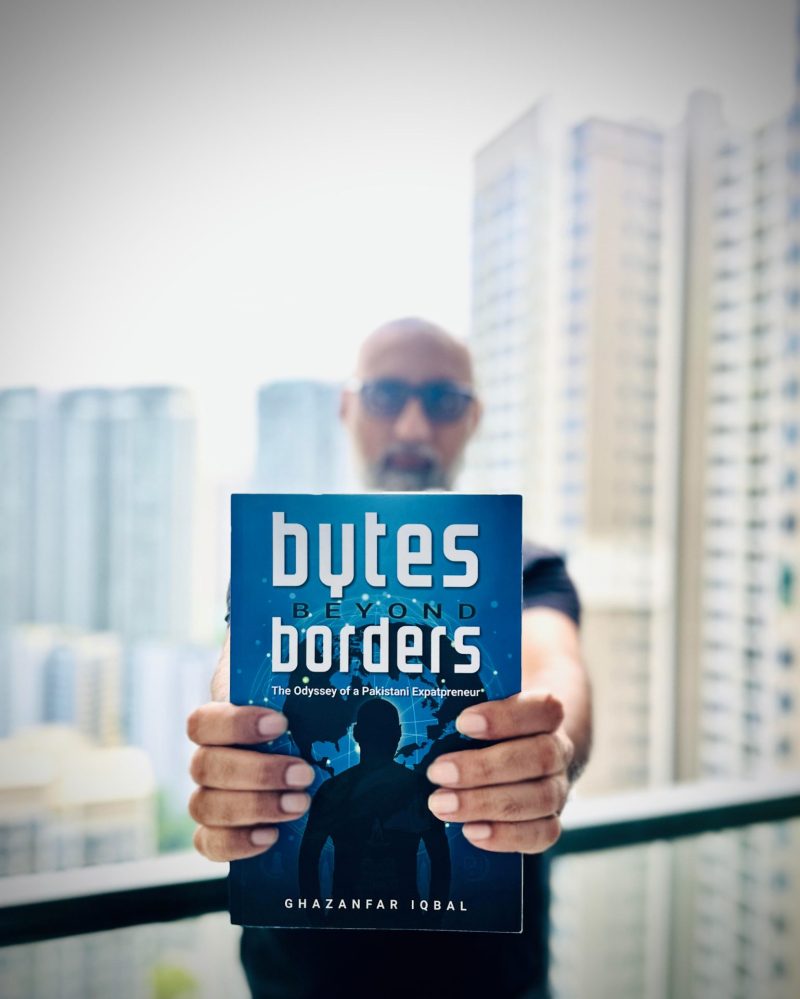
The Inevitable Journey of Ghazanfar Iqbal: Expatriate, Entrepreneur, and Author

Publishing for Peace: Author Ben JS Maure Inspires Canadian Peacekeepers

Unleashing Literary Flames: Award-Winning Author TK Riggins Keeps Readers Coming Back for More with 7-Book Series
Get our free definitive guide to creating a nonfiction bestseller here.

Nonfiction Essay
Nonfiction essay generator.

While escaping in an imaginary world sounds very tempting, it is also necessary for an individual to discover more about the events in the real world and real-life stories of various people. The articles you read in newspapers and magazines are some examples of nonfiction texts. Learn more about fact-driven information and hone your essay writing skills while composing a nonfiction essay.
10+ Nonfiction Essay Examples
1. creative nonfiction essay.
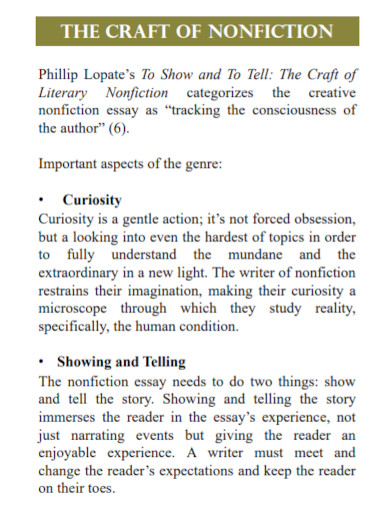
2. Narrative Nonfiction Reflective Essay
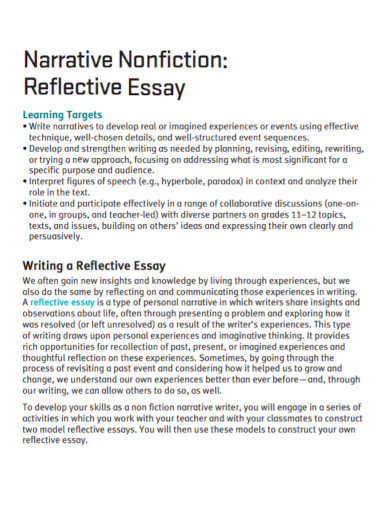
Size: 608 KB
3. College Nonfiction Essay
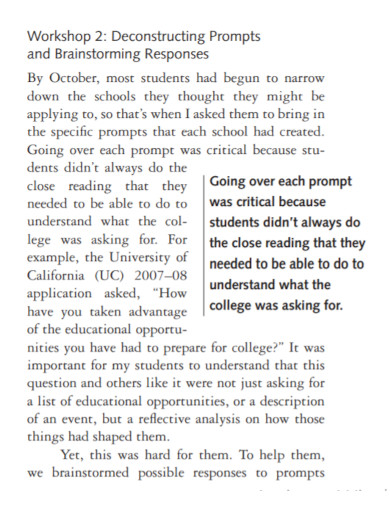
Size: 591 KB
4. Non-Fiction Essay Writing
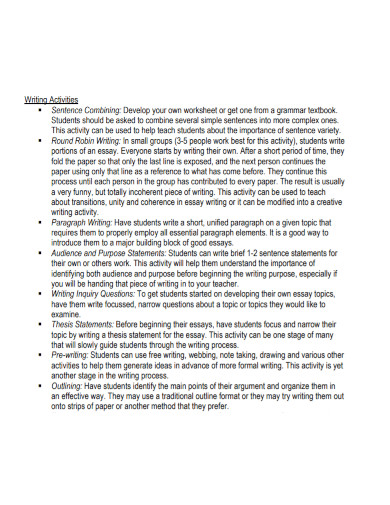
Size: 206 KB
5. Nonfiction Essay Reminders

Size: 45 KB
6. Nonfiction Essay Template
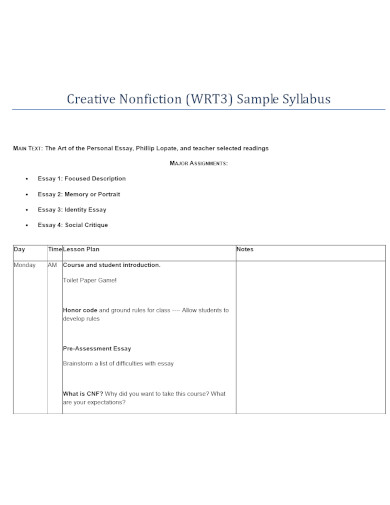
Size: 189 KB
7. Personal Nonfiction Essay
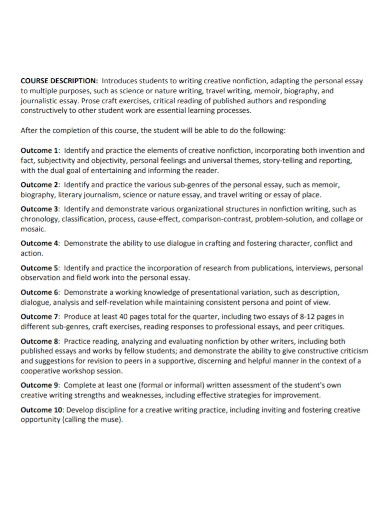
Size: 51 KB
8. Teachers Nonfiction Essay
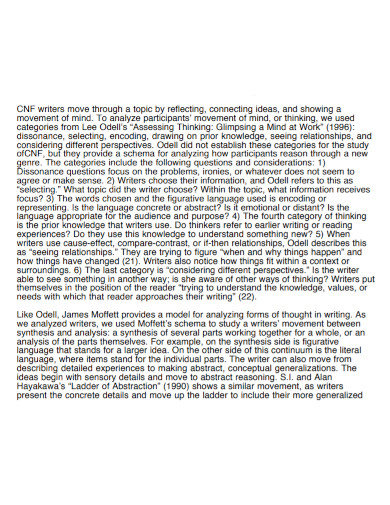
Size: 172 KB
9. Creative Nonfiction Assignment Essay
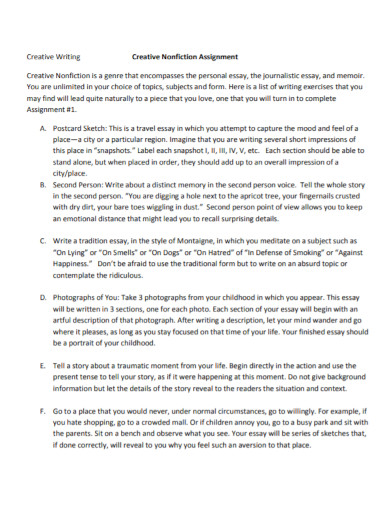
Size: 282 KB
10. Nonfiction Descriptive Essay

11. Literary Arts Nonfiction Essay
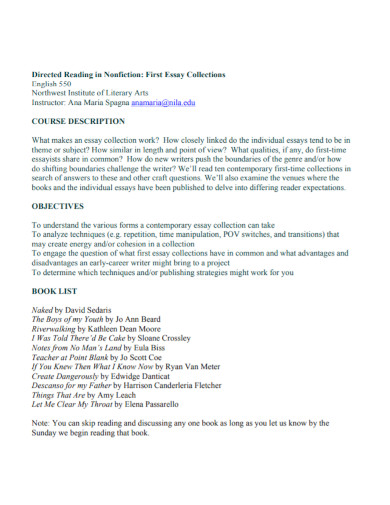
Size: 93 KB
What Is a Nonfiction Essay?
Nonfiction essay refers to compositions based on real-life situations and events. In addition, it also includes essays based on one’s opinion and perception. There are different purposes for writing this type of essay. Various purposes use different approaches and even sometimes follow varying formats. Educational and informative essays are some examples of a nonfiction composition.
How to Compose a Compelling Nonfiction Essay
When you talk about creative writing, it is not all about creating fictional stories. It also involves providing a thought-provoking narrative and description of a particular subject. The quality of writing always depends on how the writers present their topic. That said, keep your readers engaged by writing an impressive nonfiction paper.
1. Know Your Purpose
Before you start your essay, you should first determine the message you want to deliver to your readers. In addition, you should also consider what emotions you want to bring out from them. List your objectives beforehand. Goal-setting will provide you an idea of the direction you should take, as well as the style you should employ in writing about your topic on your essay paper.
2. Devise an Outline
Now that you have a target to aim for, it is time to decide on the ideas you want to discuss in each paragraph. To do this, you can utilize a blank outline template. Also, prepare an essay plan detailing the structure and the flow of the message of your essay. Ensure to keep your ideas relevant and timely.
3. Generate Your Thesis Statement
One of the most crucial parts of your introduction is your thesis statement . This sentence will give the readers an overview of what to expect from the whole document. Aside from that, this statement will also present the main idea of the essay content. Remember to keep it brief and concise.
4. Use the Appropriate Language
Depending on the results of your assessment in the first step, you should tailor your language accordingly. If you want to describe something, use descriptive language. If you aim to persuade your readers, you should ascertain to use persuasive words. This step is essential to remember for the writers because it has a considerable impact on achieving your goals.
What are the various types of nonfiction articles?
In creatively writing nonfiction essays, you can choose from various types. Depending on your topic, you can write a persuasive essay , narrative essay, biographies, and even memoirs. In addition, you can also find nonfiction essay writing in academic texts, instruction manuals, and even academic reports . Even if most novels are fiction stories, there are also several nonfictions in this genre.
Why is writing nonfiction essays necessary?
Schools and universities use nonfiction essays as an instrument to train and enhance their students’ skills in writing. The reason for this is it will help them learn how to structure paragraphs and also learn various skills. In addition, this academic essay can also be a tool for the teachers to analyze how the minds of their students digest situations.
How can I write about a nonfiction topic?
A helpful tip before crafting a nonfiction essay is to explore several kinds of this type of writing. Choose the approach and the topic where you are knowledgeable. Now that you have your lesson topic, the next step is to perform intensive research. The important part is to choose a style on how to craft your story.
Each of us also has a story to tell. People incorporate nonfiction writing into their everyday lives. Your daily journal or the letters you send your friends all belong under this category of composition. Writing nonfiction essays are a crucial outlet for people to express their emotions and personal beliefs. We all have opinions on different events. Practice writing nonfiction articles and persuade, entertain, and influence other people.
Text prompt
- Instructive
- Professional
Write about the influence of technology on society in your Nonfiction Essay.
Discuss the importance of environmental conservation in your Nonfiction Essay.
- Utility Menu
English CWNM. Nonfiction Writing for Magazines
Instructor: Maggie Doherty TBD | Location: TBD Enrollment: Limited to 12 students
This course will focus on the genres of nonfiction writing commonly published in magazines: the feature, the profile, the personal essay, and longform arts criticism. We will read and discuss examples of such pieces from magazines large (Harper’s, The New Yorker) and small (n+1, The Drift); our examples will be drawn from the last several years. We will discuss both the process of writing such pieces—research, reporting, drafting, editing—and the techniques required to write informative, engaging, elegant nonfiction. In addition to short writing exercises performed in class and outside of class, each student will write one long piece in the genre of their choosing over the course of the semester, workshopping the piece twice, at different stages of completion. Although some attention will be paid to pitching and placing work in magazines, the focus of the course will be on the writing process itself.
English CNYA. Creative Nonfiction Workshop: Young Adult Writing
Instructor: Melissa Cundieff Thursday, 3:00-5:45pm | Location: TBD Enrollment: Limited to 12 students Course Site
In this workshop-based class, students will consider themes that intersect with the Young Adult genre: gender and sexuality, romantic and platonic relationships and love/heartbreak, family, divorce and parental relationships, disability, neurodivergence, drug use, the evolution/fracturing of childhood innocence, environmentalism, among others. Students will write true stories about their lived lives with these themes as well as intended audience (ages 12-18) specifically in mind. For visual artists, illustrating one’s work/essays is something that I invite but of course do not require. We will read work by Sarah Prager, Robin Ha, ND Stevenson, Laurie Hals Anderson, Dashka Slater, and Jason Reynolds. Apply via Submittable (deadline: 11:59pm EDT on Sunday, April 7) Supplemental Application Information: Applications for this class should include a 2-3 page (double-spaced if prose, single-spaced if poetry) creating writing sample of any genre (nonfiction, fiction, poetry), or combination of genres. Additionally, I ask that students submit a 250-word reflection on their particular relationship with creative writing and why this course appeals to them. This class is open to students of all writing levels and experience.
English CMMU. Creative Nonfiction Workshop: Using Music
Instructor: Melissa Cundieff Tuesday, 12:00-2:45pm | Location: TBD Enrollment: Limited to 12 students Course Site
In this workshop-based class, students will think deeply about how music is often at the center of their experiences, may it be as a song, an album, an artist, their own relationship with an instrument, etc. This class will entail writing true stories about one's life in which the personal and music orbit and/or entangle each other. This will include some journalism and criticism, but above all it will ask you to describe how and why music matters to your lived life. We will read work by Hayao Miyazaki, Jia Tolentino, Kaveh Akbar, Oliver Sacks, Susan Sontag, Adrian Matejka, among many others, (as well as invite and talk with guest speaker(s)). This class is open to all levels. Apply via Submittable (deadline: 11:59pm EDT on Sunday, April 7) Supplemental Application Information: Applications for this class should include a 2-3 page (double-spaced if prose, single-spaced if poetry) creating writing sample of any genre (nonfiction, fiction, poetry), or combination of genres. Additionally, I ask that students submit a 250-word reflection on their particular relationship with creative writing and why this course appeals to them. This class is open to students of all writing levels and experience.
English CIHR. Reading and Writing the Personal Essay: Workshop
Instructor: Michael Pollan Monday, 3:00-5:45 pm | Location: TBD Enrollment: Limited to 12 students Course Site
There are few literary forms quite as flexible as the personal essay. The word comes from the French verb essai, “to attempt,” hinting at the provisional or experimental mood of the genre. The conceit of the personal essay is that it captures the individual’s act of thinking on the fly, typically in response to a prompt or occasion. The form offers the rare freedom to combine any number of narrative tools, including memoir, reportage, history, political argument, anecdote, and reflection. In this writing workshop, we will read essays beginning with Montaigne, who more or less invented the form, and then on to a varied selection of his descendants, including George Orwell, E.B. White, James Baldwin, Susan Sontag, Joan Didion, David Foster Wallace and Rebecca Solnit. We will draft and revise essays of our own in a variety of lengths and types including one longer work of ambition. A central aim of the course will be to help you develop a voice on the page and learn how to deploy the first person—not merely for the purpose of self-expression but as a tool for telling a story, conducting an inquiry or pressing an argument.
Apply via Submittable (deadline: 11:59pm EDT on Sunday, April 7)
Supplemental Application Information: To apply, submit a brief sample of your writing in the first person along with a letter detailing your writing experience and reasons for wanting to take this course.
English CNFJ. Narrative Journalism
Instructor: Darcy Frey Fall 2024: Thursday, 3:00-5:45 pm | Location: TBD Enrollment: Limited to 12 students. Course Site Spring 2025: TBD
In this hands-on writing workshop, we will study the art of narrative journalism in many different forms: Profile writing, investigative reportage, magazine features. How can a work of journalism be fashioned to tell a captivating story? How can the writer of nonfiction narratives employ the scene-by-scene construction usually found in fiction? How can facts become the building blocks of literature? Students will work on several short assignments to practice the nuts-and-bolts of reporting, then write a longer magazine feature to be workshopped in class and revised at the end of the term. We will take instruction and inspiration from the published work of literary journalists such as Joan Didion, John McPhee, Adrian Nicole LeBlanc, and John Jeremiah Sullivan. This is a workshop-style class intended for undergraduate and graduate students at all levels of experience. No previous experience in English Department courses is required.
Apply via Submittable (deadline: 11:59pm ET on Sunday, April 7)
Supplemental Application Information: Please write a substantive letter of introduction describing who you are as writer at the moment and where you hope to take your writing; what experience you may have had with journalism or narrative nonfiction; what excites you about narrative journalism in particular; and what you consider to be your strengths and weaknesses as a writer. Additionally, please submit 3-5 pages of journalism or narrative nonfiction or, if you have not yet written much nonfiction, an equal number of pages of narrative fiction.
English CMFG. Past Selves and Future Ghosts
Instructor: Melissa Cundieff Spring 2024: Please login to the course catalog at my.harvard.edu for meetings times & location Enrollment: Limited to 12 students Course Site Spring 2025: TBD As memoirist and author Melissa Febos puts it: “The narrator is never you, and the sooner we can start thinking of ourselves on the page that way, the better for our work. That character on the page is just this shaving off of the person that was within a very particular context, intermingled with bits of perspective from all the time since — it’s a very specific little cocktail of pieces of the self and memory and art … it’s a very weird thing. And then it’s frozen in the pages.” With each essay and work of nonfiction we produce in this workshop-based class, the character we portray, the narrator we locate, is never stagnant, instead we are developing a persona, wrought from the experience of our vast selves and our vast experiences. To that end, in this course, you will use the tools and stylistic elements of creative nonfiction, namely fragmentation, narrative, scene, point of view, speculation, and research to remix and retell all aspects of your experience and selfhood in a multiplicity of ways. I will ask that you focus on a particular time period or connected events, and through the course of the semester, you will reimagine and reify these events using different modes and techniques as modeled in the published and various works we read. We will also read, in their entireties, Melissa Febos's Body Work: The Radical Work of Personal Narrative, as well as Hanif Abdurraqib’s They Can’t Kill Us Until They Kill Us , which will aid our discussions and help us to better understand the difference between persona(s) and the many versions of self that inhabit us. Supplemental Application Information: Applications for this class should include a 2-3 page (double-spaced if prose, single-spaced if poetry) creating writing sample of any genre (nonfiction, fiction, poetry), or combination of genres. Additionally, I ask that students submit a 250-word reflection on their particular relationship with creative writing and why this course appeals to them. This class is open to students of all writing levels and experience.
English CMDR. Creative Nonfiction: Departure and Return: "Home" as Doorway to Difference and Identity
Instructor: Melissa Cundieff Please login to the course catalog at my.harvard.edu for meetings times & location Enrollment: Limited to 12 students Course Site
In this workshop-based class, students will be asked to investigate something that directly or indirectly connects everyone: what it means to leave a place, or one's home, or one's land, and to return to it, willingly or unwillingly. This idea is inherently open-ended because physical spaces are, of course, not our only means of departure and/or return-- but also our politics, our genders, our relationships with power, and our very bodies. Revolution, too, surrounds us, on both larger and private scales, as does looking back on what once was, what caused that initial departure. Students will approach "home" as both a literal place and a figurative mindscape. We will read essays by Barbara Ehrenreich, Ocean Vuong, Natasha Sajé, Elena Passarello, Hanif Abdurraqib, Alice Wong, and Eric L. Muller, among others. Supplemental Application Information: Applications for this class should include a 2-3 page (double-spaced if prose, single-spaced if poetry) creating writing sample of any genre (nonfiction, fiction, poetry), or combination of genres. Additionally, I ask that students submit a 250-word reflection on their particular relationship with creative writing and why this course appeals to them. This class is open to students of all writing levels and experience. Apply via Submittable (deadline: 11:59pm ET on Saturday, November 4)
English CGOT. The Other
Instructor: Rachel Kaadzi Ghansah Thursday, 12:00-2:45 pm | Location: TBD Enrollment: Limited to 12 students Course Site
In this class, we will consider how literary non-fiction articulates or imagines difference, disdain, conflict, and dislike. We will also discuss the more technical and stylistic elements present in strong non-fiction, like reflection, observation, retrospection, scene-setting, description, complexity, and strong characterization. As we read and write, we will put these theoretical concerns into practice and play by writing two or three profiles about people you do not like, a place you don’t care for, an idea you oppose, or an object whose value eludes you. Your writing might be about someone who haunts you without your permission or whatever else gets under your skin, but ideally, your subject makes you uncomfortable, troubles you, and confounds you. We will interrogate how writers earn their opinion. And while it might be strange to think of literature as often having political aims, it would be ignorant to imagine that it does not. Non-fiction forces us to extend our understanding of point of view not just to be how the story unfolds itself technically–immersive reporting, transparent eyeball, third person limited, or third person omniscient--but also to identify who is telling this story and why. Some examples of the writing that we will read are Guy Debord, Lucille Clifton, C.L.R. James, Pascale Casanova, W.G. Sebald, Jayne Cortez, AbouMaliq Simone, Greg Tate, Annie Ernaux, Edward Said, Mark Twain, Jacqueline Rose, Toni Morrison, Julia Kristeva, and Ryszard Kapuscinski. Supplemental Application Information: Please submit a brief letter explaining why you're interested to take this class. Apply via Submittable (deadline: 11:59pm ET on Saturday, November 4)
English CMCC. Covid, Grief, and Afterimage
Instructor: Melissa Cundieff Wednesday, 3:00-5:45 pm | Location: Barker 269 Enrollment: Limited to 12 students Course Site In this workshop-based course we will write about our personal lived experiences with loss and grief born from the Covid-19 pandemic, as well as how grief and grieving became a collective experience that is ongoing and persistent, like an afterimage or haunting. As part of our examination, we will consider intersections with other global, historical experiences and depictions of loss, including the murder of George Floyd and the AIDS epidemic. Readings will include essays by Leslie Jamison, Arundhati Roy, Susan Sontag, Eve Tuck and C. Ree, Matt Levin, and Alice Wong, among others. Apply via Submittable (deadline: 11:59pm EDT on Saturday, August 26) Supplemental Application Information: Applications for this class should include a 3-5 page (double-spaced if prose, single-spaced if poetry) creating writing sample of any genre (nonfiction, fiction, poetry), or combination of genres. Additionally, I ask that students submit a 250 word reflection on their particular relationship with creative writing and why this course appeals to them. This class is open to students of all writing levels and experience.
Instructor: Melissa Cundieff Wednesday, 12:00-2:45 pm | Location: Barker 316 Enrollment: Limited to 12 students Course Site As memoirist and author Melissa Febos puts it: “The narrator is never you, and the sooner we can start thinking of ourselves on the page that way, the better for our work. That character on the page is just this shaving off of the person that was within a very particular context, intermingled with bits of perspective from all the time since — it’s a very specific little cocktail of pieces of the self and memory and art … it’s a very weird thing. And then it’s frozen in the pages.” With each essay and work of nonfiction we produce in this workshop-based class, the character we portray, the narrator we locate, is never stagnant, instead we are developing a persona, wrought from the experience of our vast selves and our vast experiences. To that end, in this course, you will use the tools and stylistic elements of creative nonfiction, namely fragmentation, narrative, scene, point of view, speculation, and research to remix and retell all aspects of your experience and selfhood in a multiplicity of ways. I will ask that you focus on a particular time period or connected events, and through the course of the semester, you will reimagine and reify these events using different modes and techniques as modeled in the published and various works we read. We will also read, in their entireties, Melissa Febos's Body Work: The Radical Work of Personal Narrative, as well as Hanif Abdurraqib’s They Can’t Kill Us Until They Kill Us , which will aid our discussions and help us to better understand the difference between persona(s) and the many versions of self that inhabit us. Apply via Submittable (deadline: 11:59pm EDT on Saturday, August 26) Supplemental Application Information: Applications for this class should include a 3-5 page (double-spaced if prose, single-spaced if poetry) creating writing sample of any genre (nonfiction, fiction, poetry), or combination of genres. Additionally, I ask that students submit a 250 word reflection on their particular relationship with creative writing and why this course appeals to them. This class is open to students of all writing levels and experience.
English CRGS. The Surrounds: Writing Interiority and Outsiderness
Instructor: Rachel Kaadzi Ghansah Thursday, 12:00-2:45 pm | Location: Lamont 401 Enrollment: Limited to 12 students Course Site
The essayist, the writer of non-fiction, has historically been an oracle of opinions that most often go unsaid. They do not traditionally reinforce a sense of insular collectivity, instead they often steer us towards a radical understanding of the moment that they write from. The best essayists unearth and organize messages from those most at the margins: the ignored, the exiled, the criminal, and the destitute. So, by writing about these people, the essayist is fated, most nobly or just as ignobly, to write about the ills and aftermaths of their nation’s worse actions. It is an obligation and also a very heavy burden.
In this class we will examine how the essay and many essayists have functioned as geographers of spaces that have long been forgotten. And we read a series of non-fiction pieces that trouble the question of interiority, belonging, the other, and outsiderness. And we will attempt to do a brief but comprehensive review of the essay as it functions as a barometer of the author’s times. This will be accomplished by reading the work of such writers as: Herodotus, William Hazlitt, Doris Lessing, Audre Lorde, Gay Talese, Binyavanga Wainaina, Jennifer Clement, V.S. Naipaul, Sei Shonagon, George Orwell, Ha Jin, Margo Jefferson, Simone White, and Joan Didion. This reading and discussion will inform our own writing practice as we write essays.
Everyone who is interested in this class should feel free to apply.
Supplemental Application Information: Please submit a brief letter explaining why you're interested to take this class. Apply via Submittable (deadline: 11:59pm EDT on Saturday, August 26)
English CNFD. Creative Nonfiction
Instructor: Maggie Doherty Tuesday, 12:00-2:45 pm | Location: Sever 205 Enrollment: Limited to 12 students Course Site This course is an overview of the creative nonfiction genre and the many different types of writing that are included within it: memoir, criticism, nature writing, travel writing, and more. Our readings will be both historical and contemporary: writers will include Virginia Woolf, James Baldwin, Joan Didion, Audre Lorde, Hilton Als, and Carmen Maria Machado. During the first half of the semester, we will read two pieces closely; we will use our class discussions to analyze how these writers use pacing, character, voice, tone, and structure to tell their stories. Students will complete short, informal writing assignments during this part of the semester, based on the genre of work we’re discussing that week. During the second half of the semester, each student will draft and workshop a longer piece of creative nonfiction in the genre(s) of their choosing, which they will revise by the end of the semester. Students will be expected to provide detailed feedback on the work of their peers. This course is open to writers at all levels; no previous experience in creative writing is required. Apply via Submittable (deadline: 11:59pm EDT on Saturday, August 26) Supplemental Application Information: Please write a letter of introduction (1-2 pages) giving a sense of who you are, your writing experience, and your current goals for your writing. You may also include writers or nonfiction works that you admire, as well as any themes or genres you'd like to experiment with in the course. Please also include a 3-5-page writing sample, ideally of some kind of creative writing (nonfiction is preferred, but fiction would also be acceptable). If you don't have a creative sample, you may submit a sample of your academic writing.
English CACD. The Art of Criticism
Instructor: Maggie Doherty Wednesday, 12:00-2:45pm | Location: TBD Enrollment: Limited to 12 students Course Site
This course will consider critical writing about art–literary, visual, cinematic, musical, etc.—as an art in its own right. We will read and discuss criticism from a wide variety of publications, paying attention to the ways outlets and audience shape critical work. The majority of our readings will be from the last few years and will include pieces by Joan Acocella, Andrea Long Chu, Jason Farago, and Carina del Valle Schorske. Students will write several short writing assignments (500-1000 words), including a straight review, during the first half of the semester and share them with peers. During the second half of the semester, each student will write and workshop a longer piece of criticism about a work of art or an artist of their choosing. Students will be expected to read and provide detailed feedback on the work of their peers. Students will revise their longer pieces based on workshop feedback and submit them for the final assignment of the class. Apply via Submittable (deadline: 11:59pm EDT on Sunday, April 7) Supplemental Application Information: Please write a letter of introduction (1-2 pages) giving a sense of who you are, your writing experience, and your current goals for your writing. Please also describe your relationship to the art forms and/or genres you're interested in engaging in the course. You may also list any writers or publications whose criticism you enjoy reading. Please also include a 3-5-page writing sample of any kind of prose writing. This could be an academic paper or it could be creative fiction or nonfiction.
English CNFR. Creative Nonfiction: Workshop
Instructor: Darcy Frey Fall 2024: Wednesday, 3:00-5:45 pm | Location: TBD Enrollment: Limited to 12 students. Course Site Spring 2025: TBD
Whether it takes the form of literary journalism, essay, memoir, or environmental writing, creative nonfiction is a powerful genre that allows writers to break free from the constraints commonly associated with nonfiction prose and reach for the breadth of thought and feeling usually accomplished only in fiction: the narration of a vivid story, the probing of a complex character, the argument of an idea, or the evocation of a place. Students will work on several short assignments to hone their mastery of the craft, then write a longer piece that will be workshopped in class and revised at the end of the term. We will take instruction and inspiration from published authors such as Joan Didion, James Baldwin, Ariel Levy, Alexander Chee, and Virginia Woolf. This is a workshop-style class intended for undergraduate and graduate students at all levels of experience. No previous experience in English Department courses is required. Apply via Submittable (deadline: 11:59pm ET on Sunday, April 7)
Supplemental Application Information: Please write a substantive letter of introduction describing who you are as writer at the moment and where you hope to take your writing; what experience you may have had with creative/literary nonfiction; what excites you about nonfiction in particular; and what you consider to be your strengths and weaknesses as a writer. Additionally, please submit 3-5 pages of creative/literary nonfiction (essay, memoir, narrative journalism, etc, but NOT academic writing) or, if you have not yet written much nonfiction, an equal number of pages of narrative fiction.
English CLPG. Art of Sportswriting
Instructor: Louisa Thomas Spring 2024: Tuesday, 9:00-11:45am | Location: TBD Enrollment: Limited to 12 students Course Site Spring 2025: TBD
In newsrooms, the sports section is sometimes referred to as the “toy department” -- frivolous and unserious, unlike the stuff of politics, business, and war. In this course, we will take the toys seriously. After all, for millions of people, sports and other so-called trivial pursuits (video games, chess, children’s games, and so on) are a source of endless fascination. For us, they will be a source of stories about human achievements and frustrations. These stories can involve economic, social, and political issues. They can draw upon history, statistics, psychology, and philosophy. They can be reported or ruminative, formally experimental or straightforward, richly descriptive or tense and spare. They can be fun. Over the course of the semester, students will read and discuss exemplary profiles, essays, articles, and blog posts, while also writing and discussing their own. While much (but not all) of the reading will come from the world of sports, no interest in or knowledge about sports is required; our focus will be on writing for a broad audience. Supplemental Application Information: To apply, please write a letter describing why you want to take the course and what you hope to get out of it. Include a few examples of websites or magazines you like to read, and tell me briefly about one pursuit -- football, chess, basketball, ballet, Othello, crosswords, soccer, whatever -- that interests you and why.
- Fiction (21)
- Nonfiction (17)
- Playwriting (4)
- Poetry (27)
- Screenwriting (5)

IMAGES
VIDEO
COMMENTS
In this post, we reveal six types of creative nonfiction personal essays for writers to try, including the fragmented essay, hermit crab essay, braided essay, and more. Take your essay writing up a notch while having fun trying new forms. Robert Lee Brewer. Apr 22, 2022. When faced with writing an essay, writers have a variety of options available.
In creative nonfiction, the personal essay is much more vibrant and dynamic. Personal essays are stories about personal experiences, and while some personal essays can be standalone stories about a single event, many essays braid true stories with extended metaphors and other narratives. ... I began to experience a particular type of identity ...
Creative Nonfiction encompasses many different forms of prose. As an emerging form, CNF is closely entwined with fiction. Many fiction writers make the cross-over to nonfiction occasionally, if only to write essays on the craft of fiction. This can be done fairly easily, since the ability to write good prose—beautiful description, realistic ...
Creative nonfiction is a genre of writing that uses elements of creative writing to present a factual, true story. Literary techniques that are usually reserved for writing fiction can be used in creative nonfiction, such as dialogue, scene-setting, and narrative arcs. However, a work can only be considered creative nonfiction if the author can ...
The point, as Gutkind shares above, is that creative nonfiction is often residing at the intersection of "the truth" and "a well-told story." If you have those elements, you're well on your way to writing creative nonfiction. *****. Personal essays are appealing first-person stories found in magazines, newspapers, anthologies, and collections.
Here at Writing Forward, we're primarily interested in three types of creative writing: poetry, fiction, and creative nonfiction. With poetry and fiction, there are techniques and best practices that we can use to inform and shape our writing, but there aren't many rules beyond the standards of style, grammar, and good writing.We can let our imaginations run wild; everything from nonsense ...
Teaches Storytelling and Writing. Teaches Creating Outside the Lines. Teaches Writing for Social Change. Teaches Fiction, Memory, and Imagination. Teaches Fantasy and Science Fiction Writing. Teaches Poetic Thinking. Teaches Writing and Performing Poetry. Icons and Their Influences. Teaches Investigative Journalism.
Creative nonfiction is a genre of creative writing that approaches factual information in a literary way. This type of writing applies techniques drawn from literary fiction and poetry to material that might be at home in a magazine or textbook, combining the craftsmanship of a novel with the rigor of journalism.
Creative nonfiction is a category of writing that combines facts and real-life stories with literary elements like narrative structure, dialogue, and character development. It can be tempting to equate it to memoir or autobiography, as these terms are sometimes used interchangeably, but creative nonfiction can also be topic- or subject-specific ...
3. World of Wonders by Aimee Nezhukumatathil. If you're looking for examples of creative nonfiction nature writing, no one does it quite like Aimee Nezhukumatathil. World of Wonders is a beautiful series of essays that poetically depicts the varied natural landscapes she enjoyed over the years. 4.
Learn How to Write Creative Nonfiction. The broad genre of nonfiction includes a wide array of appealing topics, from memoirs to self help books, sports histories to cookbooks, and true crime mysteries to travelogues. Nonfiction regularly outsells fiction, and authors like Malcolm Gladwell, Doris Kearns Goodwin, and Bob Woodward routinely top ...
When writing nonfiction, you not only get to express yourself, but you get to inform your audience on a topic that is important to you. Now you understand creative nonfiction, the different types of nonfiction genres, as well as types of literary nonfiction. Now it's time to choose the type of genre that is best for your story.
Use the Nonfiction Tag. For the rest of your tags, use topic tags or distribution tags relevant to your story. Some examples include: Addiction, Relationships, Love, Mindfulness, Society, and ...
10 Great Writing Prompts on Essays About Creative Non-fiction 1. Types of Creative Non-Fiction Writing. List down the many types of creative non-fiction and explain how they simultaneously promote the presentation of facts and creative storytelling. Like this guide, you may also find your best picks for each type of creative non-fiction. 2.
Metaphor, simile, and imagery are examples of literary elements that might help with this. 2. Character development. Genuine people, like real people, have goals, backgrounds, and distinguishing features. Dialogue, vivid characterization, and flashbacks are all common literary themes used in creative nonfiction. 3.
Memoir. Memoir is perhaps the "flagship" of creative nonfiction, the sub-genre most familiar to those outside of literary and academic circles. Most human beings lead interesting lives filled with struggle, conflict, drama, decisions, turning points, etc.; but not all of these stories translate into successful memoir.
Here are 25 of the most common types of nonfiction writing: 1. History. History is a nonfiction writing genre that describes true historical events and eras. History books detail political and social situations, using primary and secondary sources to help readers understand their legacies and causes.
Creative Nonfiction. The label "creative nonfiction" can apply to various categories of writing, including food, travel, memoir, personal essay, and other hybridized forms. The defining characteristic of CN is the use of literary techniques to create a sense of artfulness in the language, character development, and story, all of which tends ...
Types of Nonfiction. Since the world of nonfiction is very vast, in this article we're going to focus on the five most popular categories of nonfiction writing: 1. Literary Nonfiction Biography. A biography tells the life story of a real person. This type of nonfiction delves into the subject's experiences, accomplishments, and personal growth.
8 Types of Nonfiction: Nonfiction Genres to Know. Nonfiction books portray real-life people and true stories in compelling ways. Nonfiction works also include textbooks, cookbooks, and more. Nonfiction books portray real-life people and true stories in compelling ways.
That said, keep your readers engaged by writing an impressive nonfiction paper. 1. Know Your Purpose. Before you start your essay, you should first determine the message you want to deliver to your readers. In addition, you should also consider what emotions you want to bring out from them. List your objectives beforehand.
This term, which others forgo in favor of "literary nonfiction" or "narrative nonfiction," or simply "the essay," as Gutkind writes, is a blanket that seeks to cover works from Joan ...
This course is an overview of the creative nonfiction genre and the many different types of writing that are included within it: memoir, criticism, nature writing, travel writing, and more. Our readings will be both historical and contemporary: writers will include Virginia Woolf, James Baldwin, Joan Didion, Audre Lorde, Hilton Als, and Carmen ...